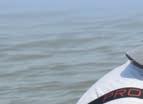
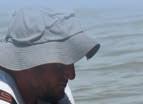
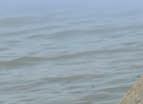
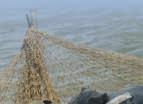


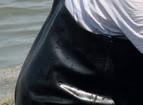
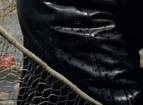

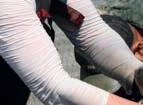
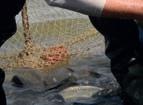

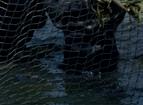
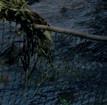
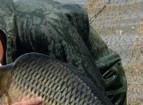
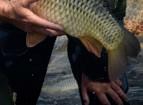

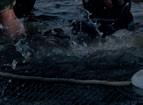
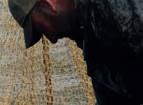
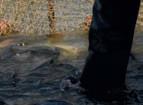
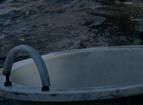






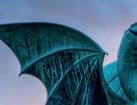




PhotographbyAlešFrelih PhotographcreditsviaLjubljanaTourism







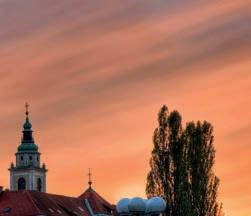


Organizedby

Supportedby LJUBLJ SEP 28







































PhotographbyAlešFrelih PhotographcreditsviaLjubljanaTourism










Organizedby

Supportedby LJUBLJ SEP 28












Since1976,EAShasbeenbringingpeopletogetherforthesustainabledevelopmentof Europeanaquaculture.Aswecelebrateour50birthday,welookbackonkeymomentsandkey th personsthatmadeEASwhatitistoday.Andwealsolookforward-continuingtoexpandour studentactivitiesandnetworkandproposebenefitsformembersthataresuitedtotheirprofile andneeds.Wewillcelebratethismilestonethroughouttheyearonsocialmedia,andinperson atAquacultureEurope2026inLjubljana,whereweinviteEASmemberstojointhecelebrations.









HUNATiP, the Hungarian Aquaculture Technology and Innovation Platform, fosters collaboration between researchers, policymakers, and sh farmers to modernise pond aquaculture. It promotes innovation in productivity, sustainability, and climate resilience. Initiatives include nutrient management, recirculation aquaculture systems, ecosystem service valuation, and water retention strategies. HUNATiP also supports EU-funded decision-support tools, peer learning, and farmer exchanges. By linking science and practice, the platform strengthens Hungarian aquaculture’s competitiveness while preserving traditions and ensuring adaptability to climate change.

O - avours in aquaculture, particularly sh and seafood, cause major economic and reputational losses. These undesirable tastes and odours, o en earthy or musty, mainly arise from geosmin and 2-methylisoborneol produced by cyanobacteria and actinomycetes in ponds and recirculating systems. Although not usually harmful to health, o - avours reduce product acceptability. Current solutions include preventive methods like algicides, curative measures such as purging, and experimental alternatives like advanced oxidation processes or microbial degradation. Despite progress, completely eliminating o - avours remains a complex challenge.

Global food loss in sheries and aquaculture, accounts for up to 35% of production lost before reaching consumers. Despite record-high production, ine ciencies in storage, transport, processing, and by-catch lead to major waste. Discards, o en target species too small or damaged, further distort stock data. Post-harvest losses also stem from inadequate cold chains, poor infrastructure, and pest infestations. While Asia records the highest losses, even Europe loses a third of edible sh. Reducing waste requires investment, innovation, and coordinated strategies across the supply chain.



The third annual Catch Welfare Platform (CWP) conference is to be held from 19–21 November 2025 at Forteiland, IJmuiden. Founded in 2023, CWP unites 233 members from 25 countries to develop science-based solutions for wild-caught sh welfare. The event features keynote sessions, eld visits, and two innovation competitions: the Catch Welfare Innovation Award and the Catch Welfare Idea Challenge. Topics include AI applications, at sh stunning, and crustacean welfare. The last day of the event, Crustacean Day, will focus on crab and lobster handling, aiming to establish universal welfare standards.

15
An international youth camp held in July in Jurmalciems, Latvia attracted 30 participants from Latvia and Germany. Supported by the Latvian Fish Fund, the camp explored Baltic shing traditions, modern technologies, and sustainable futures for coastal communities. Activities included lectures, practical shing, sh stock research, and cultural workshops. With Latvia’s coastal shing sector in decline, the camp emphasised innovation, tourism, and heritage preservation. Participants produced educational videos and sessions, aiming to inspire wider youth engagement in sheries and promote knowledge exchange across Europe. PAGE 44

Lara Barazi, the rst female president of the Federation of European Aquaculture Producers (FEAP), stresses aquaculture’s role in food security, climate resilience, and sustainability, while pushing for simpli ed licensing, stronger trade controls, and improved consumer trust through clearer labelling and communication. She also highlights inclusivity, youth engagement, and collaboration across diverse members as essential to ensuring aquaculture’s growth, innovation, and strategic integration into EU policies. PAGE
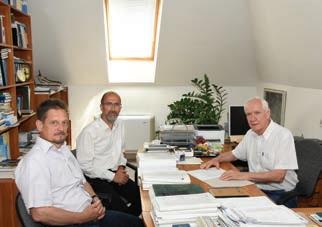
EU rules, declining sh stocks, threaten Latvian sheries
of the sh eventually reaches the consumer?
Portugal has the prerequisites for a robust aquaculture sector
Multi-use platforms: A blueprint for sustainable ocean development?

er any s only trade fair dedicated to fis presents seafood co panies fro all sta es of t e alue c ain as ell as associated co panies fro t e fields of lo istics pac a in solutions and tec nolo y
In February 2026, Bremen will once again become the meeting point for the seafood and gastronomy sectors, as sh international and Gastro Ivent open their doors together in the exhibition halls of Messe Bremen. From Sunday to Tuesday, 22–24 February 2026, visitors can explore two complementary fairs under one roof, fostering new business contacts and knowledge exchange. Founded in 1988, sh international is Germany’s only trade fair dedicated to sh and seafood. Under
new project management for the rst time in 2026, the event will feature exhibitors from import, export, wholesale, processing, packaging, aquaculture, and technology. The forum will again provide a platform for discussing the future of the industry.
At the same time, Gastro Ivent will be held for the seventh time, serving as a central meeting place for professionals from catering, hotels, communal catering, and retail in north-west
Germany. The exhibition highlights the latest food and beverage trends, kitchen technologies, digital tools, and sustainable catering concepts. The programme also features three national co ee championships, tastings, and trend talks. Together, the two fairs create a key hub where seafood professionals and gastronomy experts can meet, network, and discover innovations. For more information, visit https:// shinternational. de/en/
Musholm, a Danish owned subsidiary of Japanese seafood group Okamura Foods will acquire a 51% stake in Latvia’s company Riga Bay Aquaculture (RBA) following Musholm’s aquaculture expansion strategy. RBA had won a competitive tender for the use of two sea areas in Riga Bay and is likely going to be issued a license for up to 10,000 tonnes of farmed sh.

us ol a subsidiary of apan s O a ura Foods is acquirin a a site in at ia in addition to e istin ones in en ar and apan
Latvia will become the company’s third aquaculture base in addition to the preexisting sites in Denmark and Japan. The deal re ects the growing struggle of Musholm to navigate tightening Danish regulations on licenses and farming permissions. Okamura Foods has the goal of becoming one of the top 20 largest trout producers globally and looks to fully integrate their aquaculture company in Latvia with the new deal.
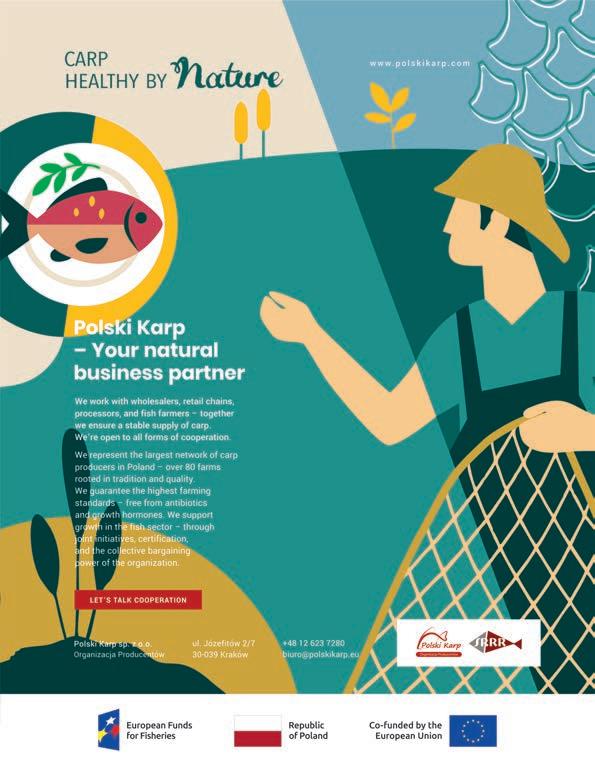
In the seaport town of Hirtshals, Denmark, a new trout farming operation is being pioneered by two Norwegian entrepreneurs, Samuel Muren and Håkon Volden, according to the shsite.com. The project, called Onnest, is taking a multidisciplinary approach to trout farming that includes prioritising minimal waste, and transparency with the public. Their model of sustainability aims to integrate all parts of the production process into a closed, functioning loop. To achieve their goal of minimal waste, the farm will not rely on soy, a common ingredient in aquafeed, and instead will aim to produce feed from
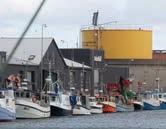
Onnest a trout far in pro ect in irts als see s to ini ise its en ironental footprint by a on ot ers creatin feed fro al ae ro n on site
In July Minister Luis Planas of the Spanish Ministry of Agriculture, Fisheries and Food presented seven newly signed cooperation agreements with industry organisations supported by a public investment of over €410,000. The aim is to boost the consumption of sh, seafood, and related products such as canned goods to try and reverse a worrying long-term trend: seafood consumption in Spain has fallen by nearly 30% over the past decade despite investments of over EUR11.5m in promotional initiatives by the ministry since 2019. In 2024, per capita consumption dropped by 3.7% year-on-year to just 22.3 kg. Most of this consumption—around 17.9 kg— is within households, and while prices have risen by 4% on average (above the general food price increase of 2.8%), the minister noted that seafood remains
available across a wide price spectrum. Campaigns will target young people and urban residents, with a focus on modern, ready-to-cook formats and messaging that highlights health bene ts, sustainability, and the cultural heritage of Spanish sheries. The organisations involved in the new promotional agreements include Fedepesca (the National Federation of Fish Retailers), the Spanish Federation of Fishermen’s Guilds, Anfaco-Cecopesca (the National Association of Fish and Seafood Canning Producers), Anfabasa (the National Association of Cod and Salted Fish Producers), Inter sh-España (the Interprofessional Fisheries Organisation), Conxemar (the Spanish Association of Fish Importers, Exporters and Processors), and the Association of Fisheries Producer Organisations.
algae that is grown on site. This move will lower the farm’s carbon footprint and contribute to the circularity of the operation by maximising resource use and repurposing byproducts.
The operation plans to create products that not only bene t the environment but also improve human health. Onnest says that it wants to produce sh with a high omega-3 content through designing new feed and that its farming methods will minimise sh mortality. The company will also educate consumers on Onnest’s sustainable farming methods.
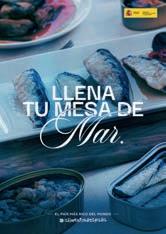
Faced it a steady decline in seafood consu ption t e Spanis inistry of riculture Fis eries and Food as for ed stron alliances it ey sta e olders in t e fis eries and aquaculture sectors to re erse t is trend

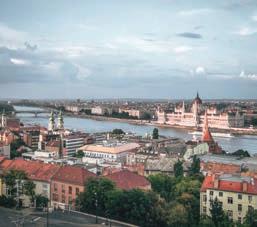










n lers cau t tons of fis fro a e alaton follo ed by tonnes and tonnes of fis fro t e anube and is a ri ers respecti ely
Despite catch quantity dropping by 9.8% since 2023, Hungary’s Lake Balaton still resides at the top of the nation’s sh catch rankings, according to a report from the National Federation of Hungarian Anglers (MOHOSZ). Lake Balaton is a freshwater ri lake located in the nation’s west. It is the largest lake in Central Europe and is the site of both tourism and inland sheries. The decline in catch quantity is partially attributed to the recent drop in garda, a native sh species that once represented a large percentage of Hungary’s seasonal yield. Now, species such as carp and bream head the list of caught biomass.
Although it is not common for sh restocking to be done in Europe, the process was carried out in 2023 by several Hungarian shing organisations with the goal of restoring ecological balance, creating diversity, reintroducing native sh species, and partially compensating for the damage caused by cormorants. Extensive restocking in 2023 led to minimal restocking in 2024, which may have contributed to the decline in the recorded total catch.












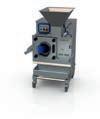




• Highyieldseparationoffish
• Hygienicandeasy to maintain








































































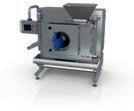

STS Belt Separator – different sizes of Soft Tissue Separator
• Choiceofmanualoperationorour patented automatic controls
• Includesoversized hopper in-feed for auto feeding
Croatian tuna, prized for its high quality, is now included in the list of 126 agricultural and food products from Central and Easten European Countries (CEEC) that has been newly approved for import into China. The grant follows the fourth annual China-CEEC Exco and International Consumer Goods fair in Ningbo in east China. Croatia’s new market access is part of China’s broader e ort to streamline European import procedures and broaden access to the market in general. Prior to this access. Japan had been the primary market for Croatian blue sh tuna. Other Eastern European products, such as Latvian canned sh, have already been approved for the Chinese market. Croatian tuna farmers capture juvenile tuna and fatten them over the course of a few months by feeding them small pelagic sh. The process ensures a high traceability and a high market value.
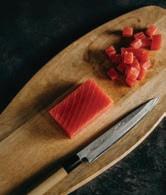
Croatian tuna far ers are e pandin t eir ar ets in sia Sales to apan ill no be supple ented by e ports to C ina
Investigations from the Earth Journalism Network are uncovering the rapid decline of Mediterranean hake populations which are largely due to the illegal farming and selling of juvenile hake on the black market. These juvenile hake nicknamed “merluzzetti,” are illegal to sell, but seem to be extremely easy to purchase on shing vessels close to docks on the western Italian coast. The shortest legal length for selling hake is 20 centimetres but the report states that in ports in Tuscany, Lazio, Campania, and Sicily, hake of just a few centimetres
As climate change accelerates the decline of sh stocks and the melting of ice platforms, Lithuania has noticed that the Baltic seal population is su ering. Now, rescue e orts are being expanded at the Baltic Sea Animal Rehabilitation Centre located in Klaipeda. Seals that wash up on the Lithuanian shorelines are brought into the centre and returned to health. The centre has been seeing seals since the 1980s, but notes that recently, more and more seals are lining the coast. Arunas Grusasa a biologist at the centre, says that seals were taught how to feed themselves, and to get used to the sea again The work of the centre is crucial, as the survival rate of seal pups was as
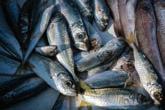
lle al fis in acti ity is at often leads to t e ar estin of undersi ed a e e ost effecti e ay to preent t ese practices is by usin lar er es nets for fis in
long were readily available to buy. Boxes of hake purchased from these docks have an average hake length of 7-15 centimetres. Oceana’s sheries manager for the Mediterranean sea, Giulia Guadagnoli, says that “hake is in a state of total biological collapse,” and that the species is unlikely to recover from such detrimental activity.

For any years it uania as been co itted to protectin t eir altic seal populations t rou conser ation efforts and re abilitation centres
low as 5%. Once the scientists release the seals back into the wild, they equip them with GPS trackers to see where they migrate. The centre reports that they favour a route towards the Swedish Gotland Island where there are many sh. The centre has helped to rebuild the seal population, which fell to nearly 4,000 in the late 20th century. Now the Baltic seal population numbers up to 50,000 and is considered a menace by shers and sh farmers in the Baltic.
Spain, a member of the European Union, and Mauritania, an African country, met in late July to consolidate and strengthen shing cooperation between the two countries. The meeting reinforces the pair’s collaboration as talks begin to renew the EU-Mauritania sheries protocol ending in late 2026. This agreement impacts Spain, as Mauritania is a leading destination for Spanish shing vessel exports. Over 30 Spanish shing vessels operated in Mauritian waters last year, capturing nearly 16,000 tons of sh. The agreement does not only allow Spain to
sh in Mauritania but also requires the Spanish eets to employ local sailors. During the meeting, both ministers emphasised the importance of strengthening training programs and cooperations for these sailors. Spain agreed to launch a nautical training program called Intermares beginning in 2026. The meeting also concluded with a mutual agreement to better communicate closures in Mauritania’s waters to EU eets in order to prevent economic losses. As negotiations progress over the course of the next year, both countries aim to align their
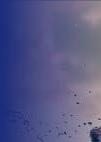
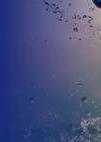

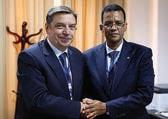
Spain and auritania s leaders reinforced t eir partners ip a ead of t e i pendin e piration of t e est frican nation s a ree ent it t e European nion
resource-sharing agreements and ensure fair representation and training within local sheries.
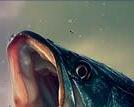
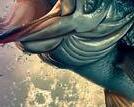
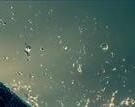
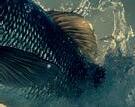


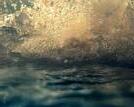



In the Adriatic Sea around one of the largest cities in Albania, it is feared that sh stocks have declined by 70%. Vlore and surrounding areas are being severely impacted by rising sea temperatures that threaten the survival of sh. Reshat Xhelilah, an o cial in Vlore, says that in 2025, the temperature of waters may exceed that of 2024, which was 30.5 degrees C. These rising temperatures can be attributed
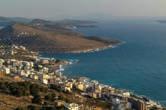
lbania is battlin risin sea te peratures and t e in uence of in asi e species ey are de elopin ne resilience strate ies t at include creatin early arnin tec nolo ies and better forecastin et ods
to climate change, which make it difcult for many marine organisms to reproduce and grow, particularly those adapted for cooler waters. Nexhip Hysolokaj of Tirana’s Polis University says that at least a dozen invasive sh species are out-competing local species that are important to the marine food web. With populations of essential sh declining, parts of Albania’s shing industry are under threat.
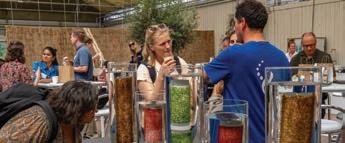
t t e site isit to orti are participants learned o t e co pany offers inno ati e solutions and tec nical support to t e industry
Seagriculture EU 2025, one of the leading conferences for the seaweed industry, successfully brought together more than 200 participants from 26 countries in Rotterdam from 17–19 June. This year’s theme, “Seaweed 2.0: Today’s Scaling for Tomorrow’s Needs,” underscored the industry’s need to scale responsibly and collaboratively in response to growing global demand for sustainable seaweed. The event served as a platform to unite stakeholders across the seaweed value chain—including producers, policymakers, researchers, investors, and buyers—to foster synergies and build a resilient, scalable infrastructure for the future of the industry.
The event opened on 17 June with either a site visit to Hortimare where participants learned how the company approaches breeding and supports farming operations or to the Royal Netherlands Institute For Sea Research which hosted a scienti c meeting in collaboration with the NWO-KIC projects CircAqua, SeaSeeds, and From Sea to Society. The main conference on 18–19 June featured ve plenary sessions, two
panel discussions, and the Seaweed Elevator Pitches, a fast-paced format that allowed for broad project exposure and idea sharing. Nearly 50 speakers shared insights on applications, farming practices, and regulatory developments in the seaweed sector. The programme also featured sessions on professionalising the seaweed industry; collaboration as a tool for a successful seaweed industry; and a roadmap for the European seaweed industry, among others.
More than 15 exhibitors presented their latest technologies, equipment and services at the Seagriculture trade show. Additionally, some 30 participants presented posters showcasing their latest research and projects. We’re proud to support the community as it grows and connects, said Kuno Jacobs, managing director of DLG Benelux, the event organiser. He added that the next editions of the event would be Seagriculture World 2026,19-21 May 2026 in Bangkok, Thailand followed by Seagriculture EU 2026, 16-18 June 2026 in Gothenburg, Sweden. For more information visit www.seagriculture.eu or contact info @dlg-benelux.com.
Procuring, preparing, and consuming food play an important role in communities. These activities can contribute to solving economic, environmental, and social challenges in di erent layers of a society.
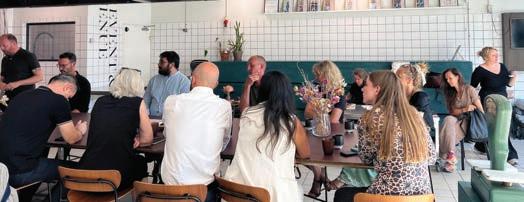
On 20 August 2025, Eurofish International Organisation took part in A Seat at the Table, an international conference hosted at the Kitchen Collective in Copenhagen. Organised under the EU-supported initiative The Renaissance of Local Food, the event brought together people working across food, culture, and regional development to explore how culinary traditions can strengthen communities and support more sustainable futures.
The programme featured ve focused sessions that invited re ection on how food shapes society—from its role in reinforcing cultural identity to its capacity to support economic opportunities and ecological resilience. Speakers from across Europe, including Greenland, Åland, Denmark, Italy, and Turkey, o ered regional perspectives grounded in lived practice and
research. The opening panel explored how traditional foodways contribute to identity and place-making. One of the highlights came from Inunnguaq Hegelund, who described the adaptive nature of Greenlandic food culture. In the Arctic, food is shaped not only by tradition but also by necessity. Drying, fermenting, and freezing are essential preservation methods, allowing communities to store and share food in a region where seasons are extreme and access to fresh imports limited.
Fishing and small-scale hunting continue to play a crucial role in food
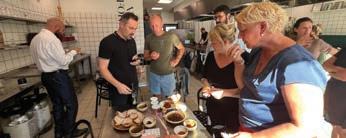
sovereignty and nutrition, particularly in coastal settlements. But the Arctic environment is changing. Rising temperatures are altering the range and abundance of sh species, which presents challenges for younger generations seeking to maintain traditional knowledge while adapting to ecological disruption.
Other sessions focused on food’s wider impact in society. The panel on food and community examined how shared meals can help reduce social isolation and foster a sense of belonging. Local initiatives in Denmark, including those led by Mia Maja Hansson and Lennart Lajboschitz, showed how communal dining experiences can be designed to welcome diverse groups—bringing neighbours, newcomers, and vulnerable individuals to the same table. The role of food in tourism and local economies was addressed in a separate session. From Åland, Viktor Eriksson shared examples of how regional food experiences—such as seafood tasting tours and sh-smoking workshops—support small producers while promoting regional identity. The discussion highlighted the potential of food not only to feed but to teach,
connect, and create value in rural and coastal areas. The fourth session turned to the policy dimension, with re ections on how municipalities and institutions can support alternative food networks. Speakers called for better integration of food policies into regional planning, particularly where it concerns public procurement, education, and support for small-scale producers.
The nal session focused on the idea of transformation—how food systems must evolve in response to environmental, social, and economic challenges. Speakers advocated for a shi away from highly centralised, resource-intensive models and towards approaches that are more inclusive, decentralised, and circular. Inclusive food systems prioritise access and participation. This means recognising the needs of di erent communities, including low-income households, minority food cultures, and remote producers. For example, some initiatives in Copenhagen have created community kitchens that o er a ordable meals while employing local residents—blending food access with social entrepreneurship. Decentralised systems move
food production and decision-making closer to the communities they serve. A farm-to-school programme in Åland, for instance, connects small sheries and vegetable growers with local schools, ensuring children receive fresh, local food while supporting micro-enterprises in the area. Circularity, meanwhile, refers to designing food systems that minimise waste and regenerate natural resources. This could mean composting food scraps to enrich local soil or using byproducts from sh processing in agricultural feed—practices that align ecological thinking with everyday routines.
Taken together, these ideas point towards food systems that are more resilient because they are more responsive, rooted in local knowledge, built around relationships, and designed to function within ecological limits.
Euro sh attended the event to engage with new perspectives and consider how sheries and aquaculture t into broader food system transitions. Euro sh’s participation re ected a growing recognition that seafood is more than a commodity—it is a cultural and ecological resource that must be understood in context. In regions where shing is still a way of life, the stories shared during A Seat at the Table underscore the importance of integrating seafood into local food strategies. Preserving marine food traditions, supporting artisanal shers, and linking seafood to education, tourism, and health are all part of this wider transformation.
The conference concluded with a strong sense of shared purpose. As The Renaissance of Local Food continues, it o ers not just a platform for discussion, but a laboratory for imagining food systems that nourish both people and places.
Ixai Salvo, Euro sh, ixai@euro sh.dk
The Catch Welfare Platform has announced its third annual conference, a free, in-person event from 19 to 21 November 2025 at Forteiland in the Dutch port of IJmuiden, site of the world’s largest lock.
Set against the backdrop of a working shing port, the location is symbolic of the focus of this year’s Catch Welfare Platform (CWP) conference: improving welfare for wild-caught sh in real-world settings. The three-day event will assemble global experts from science, the shing industry, technology, and policy to exchange knowledge, debate standards, and showcase technical solutions. Delegates can expect keynote sessions, eld visits, and two new competitive formats aimed at encouraging practical innovation.
CWP was founded in 2023 by Wageningen Research, the Institute of Marine Research Norway, No ma, and Michelle Boonstra, who manages the platform. It brings together the seafood industry, research institutions, retailers, and other stakeholders to create pragmatic, science-based solutions that improve the welfare of the catch, including post-capture stunning and slaughter. Today it boasts 233 members from 25 countries across six continents. Speaking about the upcoming event, Michelle Boonstra said that the rst conference in Bergen, Norway, in 2023 successfully brought together people from across marine science and the shing industry. While last year’s online format enabled global
participation, in-person meetings offer far greater scope for meaningful collaboration and direct engagement. They encourage stronger audience participation, she added, and we look forward to hearing well-reasoned contributions from all involved.
The conference begins with a boat ride to Forteiland on 19 November. The day opens with the Innovation Award






























ceremony, followed by pitches from the three nalists in the Advancing Catch Welfare Idea Competition. Sessions on Day 1 will cover gillnet shing, cod welfare, at sh stunning, ropeless gear, and updates on the innovative FloMo shing system. The a ernoon is themed “What can AI do for sh welfare?”, and features demonstrations and a panel discussion with audience participation.






























Day 2 kicks o with a presentation from Professor Wenbin Zhu of Zhejiang Ocean University about sh e C conference opes to encoura e t e practical i ple entation of scientific results in t e field of capture fis and seafood elfare
welfare research in Chinese sheries. This will be followed by a dive into the world of criteria, indicators and welfare footprints. Attendees are also invited to join the CWP team on a eld visit to a demersal shing vessel which is experimenting with the rst at sh stunner. The eld trip includes what promises to be an insightful visit to a local shing company. A working lunch hosted by the EU-funded VeriFish project will explore how structured welfare and sustainability indicators could shape seafood communication. VeriFish is o ering travel reimbursement for producers, retailers, and seafood associations attending the lunch and feedback session.
Day 3, Crustacean Day, begins with a series of presentations that will provide
the latest scienti c developments in the welfare of crab and lobster. A ernoon sessions will address practical handling and the development of new universal best-practice standards. The goal is to better connect science with industry needs. Crustacean Day is an invitation only event. Those working with crab and lobster are encouraged to attend and contribute to the workshop. Anyone who has not been invited can attend by sending an email to: michelle@catchwelfareplatform. com. CWP invites people to submit innovations or early-stage ideas that advance wild-caught sh welfare.
Entries for the Catch Welfare Innovation Award must demonstrate measurable impact over the past three years and will be judged on originality, welfare outcomes, and bene ts to the shing community. Winners will receive professional recognition, worldwide media coverage, a keynote speaking slot, and a handmade award trophy. The submission deadline is 26 September 2025 with results announced on 17 October 2025.
CWP is also seeking proposals for its catch welfare idea challenge, open to anybody with promising concepts that require support to develop. The top three entries will be pitched live at the conference. The winner, chosen by audience vote, will receive €4,000 in seed funding and will also have the opportunity to be introduced to potential funders. The deadline for idea submissions is 26 September 2025. The three chosen entries will be announced on 17 October 2025. Full details and application forms for the innovation award and idea challenge are available on the CWP website. The conference contributes to the organisation’s objectives of giving the shing industry a voice in the conversation, sharing knowledge and creating practical, pro table solutions regarding sh and seafood welfare. More information and a link to register are available at catchwelfareplatform.com

Eurofish partners with stakeholders in its member countries and beyond executing projects for the development of fisheries and aquaculture.
Team up with us by contacting projects@eurofish.dk or visit eurofish.dk/projects for more information.

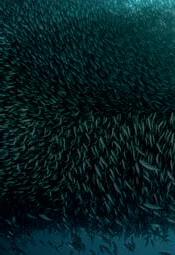
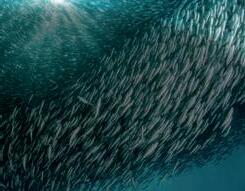



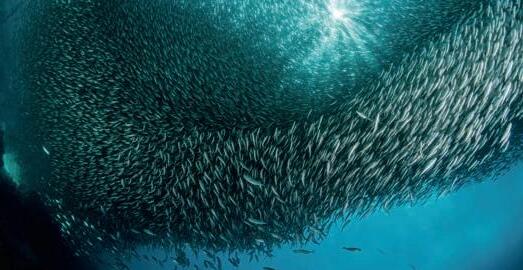
Predators and invasive species are a threat to sheries and aquaculture across Europe, but also a potential resource. At a conference in Tallinn both aspects were explored in a series of presentations that covered the Baltic, Mediterranean, Black and North Seas as well as the earthen ponds used for the cultivation of freshwater species in many European countries.
Organised by Euro sh International Organisation in cooperation with the Estonian Ministry of Regional A airs and Agriculture, the international conference Predators and invasive species—a threat or a business opportunity on 17 and 18 June 2025 in Tallinn brought together over 140 participants and 17 speakers from 20 countries. Among the attendees were delegations from ministries, researchers, industry experts, commercial and recreational shers, as well as representatives from aquaculture and sheries associations. The event was opened by Hendrik Johannes Terras, Minister of Regional A airs and Agriculture of Estonia.
Human and environmental factors contribute to presence of invasive species
Following the minister’s welcome, Marco Frederiksen, Director of Euro sh, expressed his gratitude to the
ministry for hosting the event and to the audience for their strong interest and participation. A er opening remarks highlighting the current state of Estonian sheries and aquaculture, conference moderators Søren E. Schrøder and Ixai Salvo, both from Euro sh, took over. In the rst session
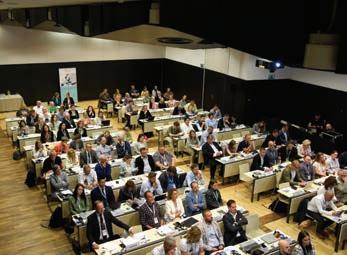
articipants at t e conference ointly or anised by Eurofis and t e Estonian inistry of Regional Affairs and Agriculture took back a wealth of information on the predators and in asi e species t at affect European seas and fres ater fis far s
speakers focused on the overview of threats in di erent sea basins of Europe. Markus Vetemaa (Estonian Marine Institute, University of Tartu) introduced the audience to threats in the Baltic Sea and surrounding inland waters. He implicated heavy maritime tra c, brackish water environment, limited native biodiversity, and climate change in the presence of over 100 new species in the Baltic Sea since the 20th century. Mr Vetamaa emphasised that the cormorant is the most important invasive newcomer in Estonia from the shery point of view.
The session continued with Matteo Leonardi and Andrea Fabris (Italian Fish Farmers Association) who both talked about invasive species in the Mediterranean Sea and surrounding inland waters. Spotted pufferfish (Lagocephalus sceleratus), scorpion fish (Pterois miles), dusky rabbitfish (Siganus luridus), striped rabbitfish (Siganus argenteus), blue spotted cornetfish (Fistularia commersonii) and blue crab (Callinectes sapidus) are just some of the new species in the sea basin. The audience also learned about benefits and risks in aquaculture production of alien species in the Mediterranean aquaculture. Pieter Boets (Provincial Centre for Environmental Research, Belgium) covered the most recent findings from the North Sea basin area, while Mehmet Aydin (Ordu University, Türkiye) closed the session with challenges and prospect in the Black Sea and adjacent inland waters.
The second session addressed the commercial opportunities o ered by predators and invasive species in salt-water areas and featured seven experts from Estonia, Greece, Denmark, Lithuania
and Norway. Annette Kägu and Rain Kuldjärv from the research organisation (TFTAK, Estonia) talked about potential developments on round goby sheries for human consumption and pet food. Describing the potential of using cormorants to create tasty dishes Urpo Reinthal (YliCool Catering) inspired the audience with di erent recipes he is developing to support the consumption of cormorants and thereby decrease the burden on the Estonian aquaculture sector.
The dra EU plan to manage cormorant predation was examined by Niels Thorvald Jepsen (DTU Aqua, Denmark), while Papadaki Prinsus (IKE, Greece) showed some of the results from the EU HORIZON project VALIAS that aims to convert marine invasive species into sustainable aquafeed. The status of round goby and its market development in Lithuania was presented by Loreta Bražinskaitė (Ministry of Agriculture, Lithuania). Market dynamics, consumer acceptance, and business opportunities for selected products—including Paci c oysters, sea squirts, and clinging jelly sh—along with recommendations for stakeholders, were the key takeaways from the intervention on markets for products from invasive species by Christian Philip Unmack (Euro sh International Organisation). The rst day’s programme concluded with a presentation by Tina Thesslund (NOFIMA, Norway), on the evolution of the invasive king crab into a multi-million-dollar industry in Norway.
The second day of the conference was opened by Preben Møller from Greenland (Great Greenland A/S), who showed the sustainable hunting, utilisation, and trade of ringed seals and
harp seals. Out of a total population of approximately 12 million, around 150,000 seals are hunted annually in Greenland. Sealskin has traditionally been used for housing, bedding, clothing, and other fashion items. Francesca Barazzetta (Eurofish International Organisation) shared her research findings on the utilisation of market opportunities for the American blue crab (Callinectes sapidus) and the blue swimming crab (Portunus segnis)—both invasive species in the Mediterranean Sea. Five case studies on blue crab use in markets in Italy, Spain, Turkey, Tunisia, and Greece supported her intervention. Mie Thorborg Pedersen (University of Southern Denmark) showed how jellyfish can contribute to diversifying sustainable food sources; however, limited supply and infrastructure remain key barriers in Europe, as harvesting and processing are not yet well developed.
The third and nal session focused on business opportunities related to predators and invasive species in freshwater areas. Béla Halasi-Kovács (Federation of European Aquaculture Producers) discussed the implications of the dra EU Cormorant Management Plan from the perspective of aquaculture producers. Per Pettersson (Swedish Inland Fishermen’s Federation) spoke about the utilisation of signal cray sh (Pacifastacus leniusculus), while Béla Urbányi (Institute of Agricultural Economics, Hungary) gave the nal presentation on Chinese carps in Hungary.
The second day o ered all participants the opportunity to gain rst-hand experience during a eld trip organised in cooperation with the Fisheries Information Centre of Estonia. At Hara Harbour, delegates had the chance to meet a local sherman and learn how round goby and cormorants are being utilised in sustainable ways.
Toni Bartulin, Euro sh, toni@euro sh.dk
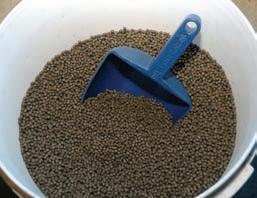
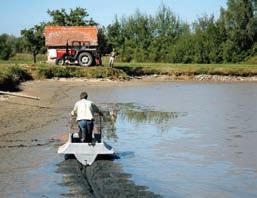
Food is primarily for nourishment, but it can also be a source of pleasure when we perceive its smell and taste as pleasant. The disappointment is all the greater when our sensory perceptions do not meet our expectations. O - avours can also occur in sh and seafood, and they are more than just a minor annoyance—they cause enormous economic damage.
Corked wine, sour beer, or rancid-tasting co ee— avour defects or o - avours can occur in almost all foods and beverages, even though they may not be spoiled or un t for consumption. It is not easy to distinguish between normal taste variability and a genuine o - avour. The causes of o - avours are diverse: incorrect processing temperatures, improper storage, early microbial spoilage, or oxidation caused by light or oxygen in the air. O en, it is enough for the levels of key avour compounds to deviate from the norm or for certain components to be missing to noticeably alter the natural avour pro le. Foreign odours from the environment can also enter a food product and perceptibly change its original smell and taste. The range of sensory assessments extends from unpleasant to inedible, sometimes more nely distinguished into descriptions such as bitter, sour, rancid, rotten, unappetising, repulsive, spoiled, or disgusting. Aside from severe microbial contamination, o - avours are rarely harmful to health. The damage they cause to producers and retailers lies mainly in

the rejection of o - avour products and complaints from customers. In addition to nancial losses, reputational damage can occur, as consumers o en avoid such products for an extended period following negative experiences.
In the sh and seafood sector, o - avour is a truly global problem. It primarily a ects aquaculture products from freshwater ponds and recirculating aquaculture systems (RAS), which o en have a musty-earthy, mouldy, or damp smell and taste. These sensory defects can occasionally occur in marine sh species too, though far less frequently. There are various possible causes of o - avour in freshwater species. Many ponds, natural waters, and recirculation aquaculture systems (RAS)
are heavily loaded with micronutrients and organic substances, which lead to excessive growth of phytoplankton and microorganisms. These aquaculture systems provide ideal conditions for the proliferation of aquatic fungi, myxobacteria, and other proteobacteria. When certain lament-forming actinomycetes (bacteria) and cyanobacteria (bluegreen algae) multiply excessively, their secondary metabolites accumulate in the water and produce a musty-earthy, muddy-rotten smell and taste.
The two substances most commonly associated with o - avour in aquaculture are geosmin (GSM) and 2-methylisoborneol (MIB). In ponds and nutrient-rich lakes, both free- oating planktonic cyanobacteria and actinomycetes—particularly Streptomyces species that live in muddy sediments—contribute to the presence of GSM and MIB in the water. In RAS, odour-producing microorganisms mainly settle in the bio lter but also
develop in thin bio lms on tank walls and oors.
Identifying o - avours does not require special expertise or sensory training, as the human nose is highly sensitive to musty smells reminiscent of a potato cellar. However, detailed sensory training can help with precise diagnosis and verbal description. Some companies that specialise in this eld o er “ avour kits” to help users train with and recognise standard avours. The sensory detection thresholds for GSM and MIB in sh esh vary by species but are relatively low. GSM is detectable by the human nose at concentrations as low as 0.3 to 10 µg/kg, and MIB at 0.035 to 0.1 µg/kg.
To precisely identify and quantify o - avour components call for instruments and analytical equipment typically available only in well-equipped laboratories. Accurate results require signi cant time, as complex extraction and concentration steps are necessary before analysis using gas chromatography–mass spectrometry (GC-MS). The di culty is compounded by the fact that only a few laboratories specialise in GSM and MIB analysis and possess su cient aquaculture expertise. Modern sensors and analytical instruments, such as “electronic noses” developed speci cally for o - avour detection, may o er a solution.
Although the main causes of o - avour are largely understood, reliable prediction—let alone prevention—of its occurrence in farmed sh has not been achieved. Nevertheless, there have been repeated attempts with varying success, depending on the aquaculture system. Any measures to combat o - avours must be environmentally
friendly, consumer-safe, e cient, and cost-e ective. Since eutrophication is a major cause of o - avour, e orts have been made to reduce nutrient accumulation in the water. One approach is to remove pond sediment to prevent the resuspension of nitrogen and phosphorus compounds and shi s in phytoplankton communities (e.g., from eukaryotes to cyanobacteria). However, even sh from such treated ponds o en still exhibited an earthy-musty oavour, sometimes making them unsellable. The intensity of the o - avour varied widely, but even small amounts of GSM and MIB were enough—depending on fat content, farming method, and diet—to signi cantly reduce the palatability of the sh. This is due to the uptake mechanisms of these substances,
which enter sh through the skin and gills directly from the water or via the gastrointestinal mucosa with food. Because GSM and MIB accumulate in the rearing water and sediments, it is nearly impossible to prevent sh—especially bottom-feeding species that consume natural food sources—from rapidly developing varying degrees of o - avour and o -odour.
In aquaculture systems such as ponds and raceways, cyanobacteria are the most common producers of GSM and MIB, while in RAS, chemotrophic
bacteria—especially actinomycetes— are considered the main contributors. Studies have shown that in around 80 percent of water samples from commercial freshwater RAS, geosmin concentrations were higher than those of 2-methylisoborneol. This suggests that GSM plays a more signi cant role in causing o - avours than MIB. A further complication is that sh absorb GSM more quickly, accumulate it more strongly, and eliminate it more slowly than MIB. As mentioned earlier, o - avour in aquaculture products leads to considerable economic costs. Rough estimates suggest that avour defects in Ictalurus products cause losses of 12 to 15 percent of the annual revenue of the U.S. cat sh industry in the Mississippi–Missouri region.




















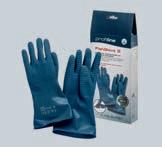





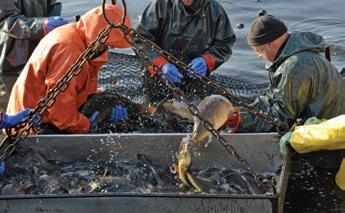
Additional, harder-to-quantify losses arise from reputational damage and declining market demand.
The growing pressure of the o - avour problem is motivating researchers and industry professionals around the world to search more intensively for viable solutions. Three main strategies are being pursued: preventive, curative, and alternative methods. The preventive approach seeks to halt the microbial production of GSM and MIB in aquaculture systems—to address the problem at its root. Given the wide variety of microbiota capable of producing GSM and MIB, completely eliminating these organisms from the systems appears impossible. However, limited success has been achieved with the use of algicides to control or eliminate harmful cyanobacteria. Such substances must not harm sh or later pose a risk to consumers. Based on current experience, low-dose copper sulphate appears to be a promising and relatively economical solution in ponds. Co-stocking ponds with plankton-eating sh or mussels may also help mitigate algae problems. In isolated cases, colouring the pond water to reduce
light penetration and photosynthesis, thereby slowing algae growth, has been considered.
The second approach, the curative strategy, is based on removing the GSM and MIB absorbed into the sh’s body. As previously described, these substances enter the sh mainly through the gills, skin, and intestines, and accumulate primarily in body fat. Their uptake re ects a dynamic equilibrium that continues until approximately equal concentrations exist in the water and the fat of the sh. The absorption and bioaccumulation of geosmin and MIB are reversible. If sh with o - avour are placed in pure water free from these compounds, the absorbed substances will di use back into the water depending on concentration gradients. However, the net e ux—or release—of GSM and MIB from sh tissue into the water occurs signi cantly more slowly than their uptake. Aquaculture producers
use this principle during purging or depuration to rid sh of o - avours. This cleaning process typically takes place at the end of the production cycle before delivery. During purging, sh are held without feeding in large volumes of clean, GSM- and MIB-free, ideally owing freshwater to allow accumulated o - avours to be eliminated from their bodies. The success of this process depends on multiple factors. Since o - avours are released more slowly than they are absorbed, the e ectiveness of purging depends heavily on the duration of exposure to clean water. If the “cleaning time” is too short, only partial removal of o - avour occurs. Achieving satisfactory results requires experience. Moreover, the removal of o - avours also depends on the sh species, fat content, intensity of the o - avour, water temperature, swimming activity, feeding frequency prior to purging, and other variables. It is particularly di cult to estimate the time required for removing o - avour from fatty tissues and organs. In the case of caviar production, sturgeon sometimes have to be purged for several months to produce truly oavour-free roe.
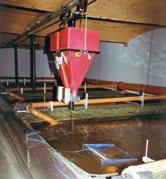
Fish from RAS often show pronounced off a ours C e otrop ic bacteria especially actinomycetes, are the chief culprits.
All these factors make the curative e ect of purging rather uncertain, partly ine ective, and costly. It requires large quantities of clean water, additional tanks and production areas, and pumps. As the sh are not fed during this time, they may lose weight, resulting in nancial losses for producers. Additionally, animal welfare concerns have been raised, as long periods without feeding are seen by some as compromising sh welfare and the sustainability of the operation.
For the reasons mentioned above, there is intensive research into methods to prevent GSM and MIB from forming or accumulating in sh. These e orts to optimise cleaning processes are grouped under the third strategy: “alternative methods.” This area is of particular interest to the RAS sector. As systems with high stocking densities that rely on water reuse and heavily populated bio lters, RAS are particularly susceptible to the development of GSM- and MIB-producing microorganisms. Although solid waste is continuously removed from recirculating water, many organic compounds that serve as substrates for o - avour microbes still accumulate in the system. Studies of o - avour have shown that actinomycetes, especially streptomycetes, are particularly common in the water treatment areas of RAS. Cleanliness and regular maintenance throughout the facility are therefore essential to prevent o - avours.
In addition, researchers are seeking alternative methods to signi cantly reduce the need for cleaning. One such method is the chemical oxidation of GSM and MIB using ozone (O3) or
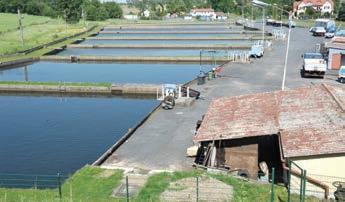
hydrogen peroxide (H2O2), ideally in combination. These treatments are already commonly and successfully used to remove o - avours in drinking water production. In low doses, ozone is frequently used in RAS for disinfection, reducing turbidity, and clarifying water colour. However, effective control of GSM and MIB would require much higher doses, potentially in combination with intense UV irradiation, which could be harmful to sh if not used with activated carbon. As strong oxidising agents, ozone and hydrogen peroxide attack not only the o - avour-producing organisms but all organic substances indiscriminately. Despite this, they are seen as promising because they break down easily and convert into harmless water and oxygen a er use. To enhance their e ectiveness and better control the processes, advanced oxidation processes (AOP) are used. These generate highly reactive hydroxyl radicals (OH) that destroy unwanted o - avour substances and remove them e ciently from wastewater. In AOPs, oxidants such as ozone (O3), hydrogen peroxide (H2O2), and peracetic acid (PAA) are combined to strengthen the treatment
against GSM and MIB. In commercial RAS trials, concentrations of o - avour compounds in recirculating water were reduced by up to 77 percent for MIB and 93 percent for GSM.
A completely new idea, still in its infancy, is the selective degradation of geosmin and MIB by other microorganisms. Also, not ready for practical use are the so-called “low o - avour RAS” systems with “o - avour bioreactors.” These bioreactors currently operate based on an up ow sludge blanket principle. However, experts agree that much better results in o - avour treatment would be achievable with moving bed bio lm reactors (MBBR). Work is already underway on this, but commercial readiness and practical implementation in RAS will take more time.
Another method—the “ nal” step, so to speak—for concealing the o - avour of a sh from the consumer is through how the product is processed and preserved. E ective methods for masking o - avour include intense seasoning, which makes o - avours less noticeable, as well as heavy smoking, which can o en partially cover up the unpleasant taste. Manfred Klinkhardt
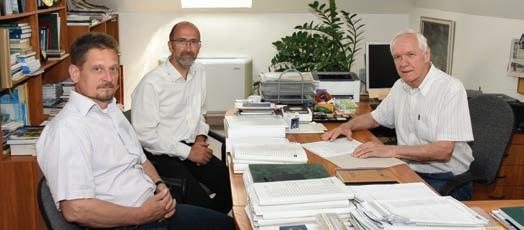
Fro left la alasi o cs ter en yel and s l radi office bearers of i t e un arian quaculture ec nolo y and nno ation latfor
Hungarian aquaculture research institutions and pond sh farmers are collaborating to make the sector more productive and more resilient to the impacts of climate change. The partnership has resulted in innovations along the supply chain.
Innovation in Hungarian pond aquaculture nds its institutional heart in HUNATiP, the Hungarian Aquaculture Technology and Innovation Platform. Established as a mirror platform for the European Aquaculture Technology and Innovation Platform (EATiP), HUNATiP supports the coordination of national innovation programmes, facilitating research and
technology transfer among scientists, producers and innovators. As DrLászló Váradi, president of HUNATiP, emphasises, innovation is vital if aquaculture is to remain sustainable and competitive in a rapidly changing world. HUNATiP’s role in organising forums, workshops, and information exchange underscores this ambition. The innovation HUNATiP fosters addresses multiple
dimensions of pond aquaculture. First, productivity: encouraging better feeding strategies, genetic selection, and pond management techniques. Second, sustainability: improved water quality monitoring, environmentally friendly practices, and advanced nutrient and environmental management decision support tools. Third, resilience: helping farmers prepare for
droughts, temperature extremes, and regulatory shi s.
HUNATiP functions as a bridge between scienti c understanding, policymaking, and farm practice. Dr Váradi underlines the di culty that many pond sh farmers face in accessing innovation: knowledge o en remains trapped in research institutions. HUNATiP aims to reverse that, by developing networks and workshops that bring together scientists, public bodies, and producers to share research ndings, pilot practices, and exchange feedback. Despite the di culties some farms have implemented innovative approaches to sh production developed, for example, at the Research Center for Fisheries and Aquaculture (HAKI) where the combined extensive-intensive systems of pond cultivation were studied. In these systems the extensive ponds are used as lters to remove nutrients generated in the intensive part of the production. Other farms cultivate sturgeons and process and market the caviar. The inter-branch organisation MA-HAL which represents the aquaculture value chain is a strategic partner. Dr Béla Halasi-Kovács, managing director of SCIAP Consulting and a founding member of HUNATIP, adds that MA-HAL has new leadership which is keen on bringing innovative ideas to its farming members. This has resulted in a joint initiative between HUNATIP, MA-HAL, and the Ministry of Agriculture to dra an innovation strategy for the sector.
Another breakthrough Dr Varadi points to is the collaboration between HUNATIP and the Managing Authority of the Hungarian operational programme of the European Maritime, Fisheries and Aquaculture Fund (EMFAF), whereby HUNATIP is involved in the development of the guidelines for
the evaluation of applications that seek support for innovation. At the same time Dr Varadi, Dr Halasi-Kovács, and other o ce bearers are promoting the idea of innovation as well as the opportunities o ered by the EMFAF at meetings involving the sector. They advocate for the importance of creating not only new products, services, and ways of operating, but also new relationships and ways of thinking. One example is getting farmers to exchange information about good practices by going on eld trips to visit farms within and outside Hungary. Another is rethinking the water management system in pond farms to retention the pond water in the rural landscape, or the use of data (rather than trial and error) to manage the production.
Dr Varadi says that there are cases where eld trials have delivered a proof of concept, but then this knowledge is not implemented. Some of our e orts should just go towards encouraging the farmers to use what is already known, he feels. Farmers also need to understand that area-based subsidies are unlikely to last forever and that greater innovation is the way forward if the sector is to thrive. Intensive aquaculture in recirculation systems, for example, already established with African cat sh, would qualify as innovative if other high value species were produced like this. Support from the EMFAF should go towards discovering and deploying new times of aquaculture systems, says Dr Halasi-Kovács, so that we can increase Hungarian production. Increasing pond yields is theoretically possible but the market for larger volumes of pond-farmed sh is limited— more than half the production goes not for consumption but for restocking natural waters. Moreover, increasing yields would counteract the ecosystem services provided by ponds and is therefore
not desirable, Dr Varadi says. Hungarian sh consumption by capita is about 6.5 kg. However, less than a sixth of this (around 1 kg) comes from domestic production. Developing a market for new farmed species and introducing new systems to cultivate them in would qualify as innovative, Dr Halasi-Kovács feels. Another area of innovation is data production and analysis. Data on ecosystem services need to be collected and processed to provide an accurate, science-based value of these services. Dr Varadi is in no doubt that both farmers and policymakers will nd it useful to have credible data on the costs and bene ts of ecosystem services. As climate change impacts become more intense, water management increases in importance. The Hungarian administration prioritises water retention as a way to adapt to periods of low precipitation or drought. Farmers play a critical role in water management as they know the ponds and the sh and the interplay between them. Encouraging farmers to consider themselves as custodians of the ponds rather than as pure producers would be an innovative approach, says Dr Varadi, that combines a focus on water management with sh production. The activity of cultivating sh contributes to keeping the pond in good health (not overrun with reeds, for example) as well as generating the revenue needed to cover the expense of maintaining them.
Hungarian production from sh ponds has been stable unlike several other European countries where output has fallen. This was partly the result of innovations in monitoring, in nutrient management, water management, and other areas of pond production, says Dr Halasi-Kovács. Today, interest
in recirculation aquaculture systems (RAS) is increasing as they are well suited to three species groups—salmonids, sturgeons, and cat shes. Innovation in production must also be followed by innovation in processing, an area where much remains to be done, according to Dr Varadi. He attributes the lack of value-addition to the di culties in processing sh from ponds which are ve or six di erent species of di erent shapes and sizes with bones distributed in the esh, and which are, moreover, harvested seasonally. Innovation can also be applied to distribution and sales. For example, a cat sh farm has invested in mobile shops to sell its production. By positioning the shops at the same location and time week a er week according to a xed schedule, the farm has introduced cat sh to remote areas enabling it to expand its customer base. The strategy could serve as a model to build interest in new species.
HUNATIP also promotes the adoption of decisionsupport tools developed in EUfunded projects, such as ClimeFish. MAHAL, which represents more than 90percent of Hungarian aquaculture
production, participated in ClimeFish by providing historical data and cocreating climate adaptation strategies in Hungarian case studies. Through HUNATiP’s network, these tools are disseminated to producers, with onsite pilots and feedback loops to re ne usability. The outcome is that farmers are not just aware of innovation—they are directly using it to guide management decisions.
Though innovation o en sounds abstract, Dr Váradi and Dr Halasi-Kovács describe how workshops, publication of guides, and knowledgetransfer events gradually build trust. Farmers who attend nd that new technologies—such as remote sensors, adaptive feeding systems, or improved pond design—can yield savings, reduce environmental risk, and strengthen their business models. Rather than topdown directives, HUNATiP’s approach uses peer learning and demonstration
plots to show what works. This is re ected in the platform’s strategic partnerships. Alongside EATiP, HUNATiP works with FEAP, EAS, EUROFISH, FAO, CopaCogeca and other bodies to ensure innovation aligns with European objectives while remaining grounded in local realities. One of the greatest successes lies in these outward and inward connections—HUNATiP both elevates Hungarian innovation to a European stage and ensures European policy responds to the speci c needs of pond aquaculture.
Behind the institutional role, both leaders foresee a future where Hungarian pond systems thrive through adaptability, data-driven management, and environmental integrity. Rather than supplanting tradition, innovation strengthens it—ensuring that centuries-old practices can endure in an era of climate uncertainty and changing markets. In enabling exchange between farmers, researchers, and policymakers, HUNATiP positions itself not simply as a platform, but as a linchpin in the future of sustainable aquaculture in Hungary.
With its electronics- lled buoys a Hungarian company is bringing the pond sh farming sector into the digital world.
Walise, short for Water and Life Services, is a Hungarian company founded to address the increasingly urgent challenges facing aquaculture in pond sh farms. Based in
Kaposvár, Walise has in just a few years established itself as an innovative provider of automated water quality pro ling and intervention systems.
The company’s origins lie in another business called Embedded Systems Hungary (ESH), which had been active for
many years designing specialised hardware solutions across a wide range of sectors, from medical devices to railway ticketing machines. As Tibor Koleszár, Walise’s founder, explains, ESH functioned as a project company, solving oneo engineering problems for clients. But
when the economic climate worsened and customers could no longer invest in development, the team looked to their own ideas. One of these had been gathering dust for more than a decade: a concept for water monitoring buoys.
Mr Koleszár’s personal interest in shing and sailing meant that water had always held his attention, but he lacked the biological knowledge to know what to measure or why. The turning point came when he met a hydrobiologist specialising in sheries ecology. He explained that climate change was creating acute problems in lakes and sh farms, from declining oxygen levels to harmful algal blooms. Mr Koleszár and his colleagues could build the technology; the hydrobiologist could de ne the ecological questions. Their partnership gave birth to the rst automated Pro ling Measurement Unit, or PMU, around 2015.
The PMU was a large, heavy device, weighing up to 240 kg. It was di cult and costly to deploy, requiring special equipment to lower it into the water. Realising that customers would need something more practical, the team redesigned it to be modular and transportable. Newer versions weigh from 2 to 85 kilograms and can be taken apart for easy transport in an ordinary vehicle. From these beginnings, Walise has developed a range of monitoring solutions. The PMU is still the agship, capable of pro ling water quality down to 20 metres, recording conditions at di erent depths to reveal strati cation that can be invisible at the surface. A smaller version, the Shallow Measurement Unit or SMU, caters for shallower bodies of water, measuring just a couple of metres deep. There is also the Fixed Measurement Unit, or FMU, a compact, solar-powered station
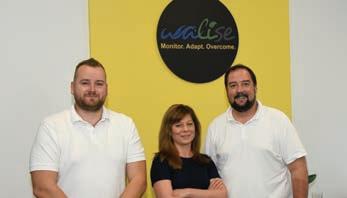
that can be installed on a shoreline to monitor not only water but also soil and air parameters.
All devices feed into Walise’s cloudbased platform. This system was originally conceived as an “early warning” tool for sh farms. Customers receive real-time noti cations when parameters such as oxygen concentration or temperature cross critical thresholds. Over time, the platform has evolved into something more sophisticated. It now allows automated control of equipment such as aerators, pumps, and sluice gates. Farmers can set conditional rules so that, for example, if oxygen drops below a set point during a hot, still night, the system can activate aeration without human intervention.
A major challenge Walise has had to confront is customer education. Many Hungarian sh farms historically relied only on handheld thermometers or dissolved oxygen meters, if at all. Farmers o en believed that surface conditions
represented the whole pond. Walise’s equipment revealed sharp di erences in oxygen levels between layers, or striking variations between two ponds only metres apart, due to di erences in sediment or algae. The data sometimes contradicted farmers’ instincts, leading to scepticism. Typical calls to the company began with complaints that sensors must be faulty, only for handheld checks to con rm the readings. Once farmers became accustomed to the wealth of data and learned how to interpret it, many went on to purchase additional units.
This need for guidance has led Walise to work closely with universities, biologists, and associations such as the Hungarian Fishing Association (MOHOSZ). The company not only supplies equipment but also o ers data interpretation, consultancy, and training. Real value lies in understanding what to do with data and Mr Koleszár expresses an ambition to develop educational resources so that knowledge can spread more widely. For Walise, raising awareness is as important as making sales. The company’s clients so far are concentrated in Hungary, with a handful of installations in Serbia. Their model
has been to build personal relationships, visiting each site, studying the layout of ponds, and recommending a tailored con guration. In 2024, Walise began expanding abroad through Energo sh, a Hungarian distributor with an established European network. The company presented at EFTTEX 2025, the European shing tackle trade exhibition in Brussels, and has attracted interest from feed companies such as Aller Aqua, who see potential in monitoring to optimise feeding strategies.
Walise’s philosophy is encapsulated in its slogan: “Monitor, Adapt, Overcome.” By monitoring, farmers gain a true picture of their waters. By adapting, they can make timely interventions. By overcoming, they prevent stock losses and maintain productivity even under stress. In an era when droughts, heatwaves, and extreme weather are becoming more frequent in Central Europe, such tools are moving from optional to essential.
The company continues to innovate. It is developing solar powered “airli er” devices to circulate the water in stratied ponds without the need for external

e buoys are equipped it sensors t at onitor a ran e of alues includin te perature o y en content of t e ater p ytoplan ton le els p and ot er critical para eters blue reen al ae a onia etc
power supplies. It is working on an autonomous boat, akin to a water drone, that can travel across large ponds to map conditions in real time. It is even testing systems to capture and analyse greenhouse gases emitted from water bodies. At the same time, the design of the buoys themselves has been re ned to reduce maintenance: sensors retract out of the water when idle, so they need cleaning only once a month, saving labour. Cost remains a consideration, but Walise has positioned its products as a ordable compared with large-scale marine monitoring systems designed for oceans. A full-featured PMU costs around €15,000, while the smaller SMU is about €6,500. For many farmers, this is a serious investment, but one that can be o set by avoiding catastrophic sh kills.
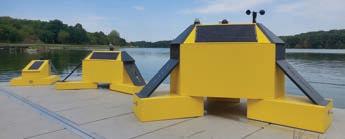
ree of t e co pany s odels fro left t e C is for fi ed dept easure ents at c a in it ideal for s allo la es and ri ers t e S allo easure ent nit S is used in ater around deep ile t e rofilin easure ent nit can be deployed in ater up to deep
The adoption of Walise’s systems also speaks to broader environmental concerns. Hungary, like much of Europe, is facing declining water levels and rising temperatures. In some regions, ponds have run nearly dry in midsummer. In others, fertiliser runoff from adjacent fields has worsened water quality. By capturing data in such varied conditions, Walise is building not only a commercial product but also a scientific resource. Customers generally agree that their anonymised data may be used for research, helping to build a picture of climate impacts on inland waters.
Though the company is small, with only around eight employees, its network of partners and collaborators extends widely. Manufacturing of parts is handled in Kaposvár and nearby workshops, with assembly completed in-house. Software development, analytical work, and biological expertise are pooled from both employees and external specialists. This lean model allows Walise to remain agile while tackling complex problems and may enable its devices to become a fixture not only in Hungary but across Europe in the years to come.
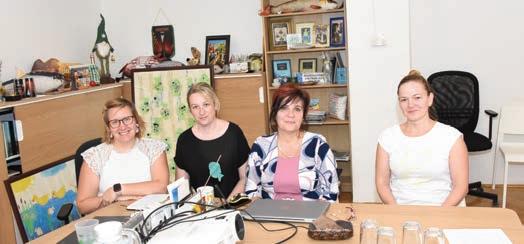
The Aquaculture and Fisheries Analysis Department of the Hungarian Institute of Agricultural Economics (AKI) plays a central role in the collection, evaluation, and dissemination of sheries and aquaculture data in Hungary.
The Aquaculture and Fisheries Analysis Department is both a professional research unit and a service provider to policymakers, stakeholders, and international organisations. By combining statistical rigour, economic analysis, and sectoral knowledge, the department has become the reference body for sheries-related data and analysis in Hungary.
The Hungarian Institute of Agricultural Economics (AKI)itself has been a cornerstone of Hungarian agricultural
policy research for more than seventy years. Its mission is to provide the knowledge base that underpins food economy policy, including rural development, risk management, and market analysis. Within this framework, the Aquaculture and Fisheries Analysis Department is a relatively new but essential unit, created to bring together professional expertise in aquaculture and sheries. Since 2024, the unit has been coordinated by Béla
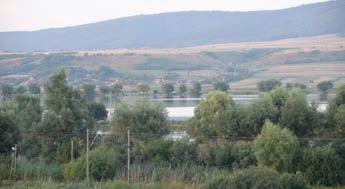
ond far s contribute to biodi ersity ater retention and ood control in addition to producin fis Establis in t e alue of t ese ecosyste ser ices is one of t e tas s t e quaculture and Fis eries nalysis epart ent is or in on
Urbányi, an agricultural engineer and the rst sheries specialist to become a member of the Hungarian Academy of Sciences. The department’s mandate is both national and European. It supports Hungary in meeting its obligations under the European Union’s Common Fisheries Policy (CFP) by managing the Data Collection Framework (DCF). At the same time, it provides independent analyses for Hungarian policymakers, sheries producers, and consumer organisations. Its work bridges statistical reporting, sectoral evaluation, and longterm strategic planning.
The department is the national authority responsible for sheries data collection under the DCF. The latest project, known as DCF3, runs from January 2024 to December 2029. It is funded entirely by a non-refundable grant of 1.39 billion forints (EUR 3.5m) under the MAHOP Plus operational programme. The project’s aim is to ensure that Hungary collects, stores, and shares sheries and aquaculture data in line with EU and national legislation. The framework covers environmental, economic, and social dimensions. Data are gathered on aquaculture production volumes, market prices,
processing, and trade. Collection extends across the entire value chain, from farm-gate prices to retail shelf prices, ensuring that trends in production costs, consumer preferences, and sectoral sustainability can be monitored. The department is also responsible for developing new methodologies, securing safe data storage, and ensuring that aggregated, non-con dential data are made publicly accessible.
The Institute maintains and develops several national data systems relevant to sheries. These include:
•The Agricultural Statistical Information System (ASIR), which provides sh production and cross-sectoral agricultural data.
•The Market Price Information System (PÁIR), which tracks prices of sh products at farm, wholesale, and consumer levels.
Fish prices are collected from retail chains, markets, and specialised outlets in multiple Hungarian cities. Monthly monitoring distinguishes between live, gutted, and lleted sh. These data reveal both the seasonal role of species such as common carp— traditionally consumed at Easter and Christmas—and the growing popularity of imported salmon and other marine sh, particularly among younger consumers. The department also analyses apparent consumption, the calculation methodology used is aligned with that applied by EU member states, thereby ensuring compatibility and facilitating the comparability of data across member states. Around 80% of sh consumed in Hungary is imported, with salmon and processed marine species dominating. At the same time, Hungarian carp remains important both domestically and for export to neighbouring Romania.
AKI has a strong publication record, with the department contributing annual and quarterly reports speci c to sheries. These include the annual harvest report, semi-annual reports on foreign trade, and a quarterly price report. In addition, the department produces a yearly comprehensive analysis of the Hungarian sheries sector, covering production volumes, market processes, external trade, consumption trends, sectoral value and general nancial situation. This synthesis provides the evidence base for both national policy and Hungary’s input into EU sheries discussions. Beyond o cial reports, the department contributes to Hungarian agriculture journals, sectoral newsletters, and Euro sh magazine. It provides country pro les, market analyses, and
news items to international platforms, ensuring that Hungarian aquaculture and sheries are visible within the European professional community. While the department carries out the bulk of sheries data collection, it also collaborates with external experts when needed. This may involve cooperation with Hungarian universities, although recent changes in university governance and disputes between the EU and Hungarian government have limited the ability to fund certain institutions. The department also works closely with professional associations such as MOHOSZ (Hungarian Angling Association) and MA-HAL (Hungarian Aquaculture and Fisheries Inter-branch Organisation) regarding sh price agreements and market developments. Internationally, the department provides data to the European Commission, Euro sh, FEAP and FAO, ensuring comparability and transparency of Hungarian sheries statistics. Its analyses were instrumental in convincing the Hungarian government to reduce value-added tax on sh products from 27% to 5%, a measure that improved sector transparency and reduced incentives for informal trade. Beyond statistical reporting, the department has begun to explore new research areas. One of the most promising is the economic valuation of ecosystem services linked to aquaculture. Pilot studies are underway to quantify the environmental bene ts of pond systems, including biodiversity support and water management functions. Alexandra Ferencz-Havel, one of the department’s younger sta members, is addressing this topic, which will provide new insights into the sustainability of Hungarian aquaculture. The department also evaluates the innovation potential of aquaculture production, the experiences of bene ciaries of operational programmes, and the pro tability of both traditional pond systems and intensive recirculating (RAS) and ow-through aquaculture
systems. These analyses feed into the implementation of the National Aquaculture Strategy and provide guidance for investment priorities.
The department is led by Béla Urbányi, supported by colleagues including Mónika Bojtárné Lukácsik, Ágnes Irma György, Zoltan Bokor, Alexandra Ferencz-Havel, Krisztián Szabó, Andrea Rózsa, Felföldi-Varga Viktória who bring expertise in economics, nance, statistics, communication, and ecology. The department works in close cooperation with Gabriella Kiss from the Agricultural Statistics Department of AKI, responsible for Hungarian sheries statistical data collection. The team re ects AKI’s broader tradition of interdisciplinary collaboration, with backgrounds ranging from agricultural engineering to nature conservation. While the core team is small, it coordinates a broad network of data providers, from sh farms to market monitors. It also interacts regularly with policymakers, ensuring that analyses are aligned with decision-making needs. The department faces several challenges. Fish consumption in Hungary remains low by European standards, and strongly seasonal. Younger consumers o en prefer imported products over domestic carp, making market development for local pond aquaculture difcult. Price competition from cheap imports, such as occasional low-priced salmon, puts further pressure on Hungarian producers.
At the same time, opportunities exist. The pandemic years demonstrated that consumer demand for sh can rise when health consciousness increases. Ms. Bojtárné Lukácsik says that during the pandemic consumers,
the elderly in particular, turned to sh in a bid to live healthier. Home deliveries strengthened as hotels, restaurants and catering establishments closed down, but the data did not show a marked rise in sh prices—perhaps partly because Hungarian consumers are price conscious. The sh price monitoring provided the data that underpinned the decision to decrease VAT on sh, from 27% to 5%, says Ms Bojtárné Lukácsik. The VAT reduction has made the sector more transparent, and the growth of online retail and delivery services has created new channels for reaching consumers. By expanding data collection to cover processing and shelf prices, the department will provide a clearer picture of competitiveness and value creation along the sh supply chain. Looking ahead, the department aims to deepen its analysis of sustainability, integrate ecosystem service valuation into mainstream statistics, and strengthen public access to aggregated data through its online platform. These e orts will support both Hungarian aquaculture producers and the EU’s broader objectives of sustainable food systems.
In an industry marked by tradition, seasonal consumption, and strong international competition, the department provides the evidence base needed to understand developments in the sector and make forecasts about its direction. Whether through monitoring carp prices at Christmas, quantifying the environmental bene ts of ponds, or negotiating data standards with Brussels, the department ensures that a reliable picture of the state of Hungarian aquaculture and sheries is no more than a few mouse clicks away.
Pond sh farming in Hungary is changing character. From producing primarily for consumption, sh is now cultivated increasingly for restocking and the ecosystem services ponds provide are becoming ever more important as the intensity of climate change impacts grows.
Tógazda Halászati Zrt., led by Dr István Németh, is one of the largest and most innovative freshwater aquaculture enterprises in Hungary. Based in Somogyapáti and with ponds spread across seven counties, mostly in the region of Transdanubia in western Hungary, the company operates on 1,800 hectares of water surface. Since its establishment in the early 1990s, it has grown into the biggest private sheries company in the western part of Hungary, with a workforce of around 70 full-time employees and a network of seasonal workers who join during harvest periods.
The scale of operations is signicant: over 80 ponds are used to rear a wide variety of species, from common carp and Chinese carps to predatory sh such as pike-perch and cat sh. Tógazda controls the full production cycle, from fry and ngerlings through to market sh. It sells to domestic and EU markets, supplies the angling sector,
and delivers directly to customers with its own eet of trucks.
Hungarian pond aquaculture has traditionally relied on a three-year cycle. Fry are stocked in the rst year when they grow into ngerlings, they grow to two-year sh in the second, and are harvested as market-size sh in the third. Historically, ponds were drained a er harvest and re lled in spring with water from snowmelt. However, as Dr Németh explained, this method has become unsustainable. Winters now bring little snow, and springs o en fail to provide enough water to re ll ponds. Over the last ten years the number of dry periods has increased constantly. In fact, in the 100 ha pond in Somogyapáti, the water level is 1.5 m lower than normal due to drought. To adapt,
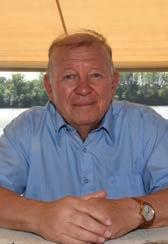
r st n et o ner and ana er of a da al s ati rt one of t e bi est pond fis far s in un ary
Tógazda has changed its harvesting technology. Instead of draining ponds completely, they now harvest without releasing the millions of litres of water, which reduces water loss but adds cost and complexity. Summer harvesting requires an extra step to let sh empty their bellies of feed before they can be sold, whereas autumn harvesting—traditionally the main season—remains more e cient because sh are no longer feeding. Moreover, when draining the ponds the harvesting can be mechanised, while retaining the water calls for more manpower.
Climate change has also made sh farming riskier. Droughts and heatwaves have become more frequent, increasing pressure on stocks, particularly sensitive species such as pike-perch. The climate has changed faster than we were prepared for, Dr Németh says, adding that the company has had to rethink technology and management strategies to remain resilient.
Tógazda’s annual income from sh farming is about €5 million. But maintaining this revenue has grown increasingly difcult. Prices uctuate heavily depending on subsidy policies in neighbouring countries and the imbalance creates an uneven playing eld, especially in export markets. Traditionally, Hungary exported to Romania, Serbia, Poland and Austria. But these markets are shrinking. Polish producers no longer need to import Hungarian carp. Bulgarian farms, using faster-growing intensive methods, are producing cheaper sh that undercut Hungarian exports. While Hungarian carp and pike-perch are recognised for higher quality, buyers in some markets prioritise lower prices. Cheaper sh from other countries is not the only threat—so is domestically produced meat. Pork, for example, is popular among consumers and is relatively cheap compared to sh. Although total production at Togazda has remained stable, climate impacts force changes in the mix of produced species; less pike-perch, a high value species, for example, and more carps. This squeeze on pro tability is compounded by rising labour costs. To hire and retain sta , Tógazda must pay wages comparable with other employers, among them international companies. Seasonal workers are essential for autumn harvests, but attracting reliable labour has become increasingly challenging.
To counter shrinking margins, Tógazda has embraced diversi cation. Beyond sh farming, it manages 12,000 hectares of hunting land across several counties, o ering hunting and wildlife tourism. As part of this activity it runs the Tógazda Safari Hunting Lodge in Somogyapáti, a lakeside retreat featuring international trophy collections, traditional cuisine and wine tastings, as well as lodges in other counties. These ventures re ect a strategy of
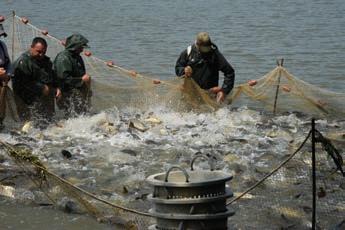
Fis bein ar ested fro a pond Cli ate c an e co pels ater retention strate ies so t e ater is not drained fro t e pond a in ar estin ore labour intensi e
multifunctionality: combining aquaculture with hunting, tourism, birdwatching and gastronomy to stabilise income. This multifunctional approach mirrors broader trends in Hungarian aquaculture. With limited subsidies and environmental constraints, many pond farms rely on side activities to stay profitable. Angling, in particular, has become a crucial market. Hungary has about one million registered anglers— roughly 10 percent of the population— and Tógazda sells around 35 percent of its production into this sector. Angling organisations and producers now cooperate closely, even agreeing on indicative prices to stabilise the market.
Tógazda is also known for its environmental commitments. Ponds are managed without antibiotics or arti cial fertilisers, instead using organic methods and
Hungarian-produced feeds. Since March this year pond parameters (temperature, oxygen content, algae, etc.) have been continuously monitored by a sensor- lled buoy. Reed beds and aquatic plants are preserved, supporting biodiversity and providing shelter for waterbirds. Otters, a protected species, are accommodated by limiting disturbance during breeding seasons, while cormorants are controlled through non-lethal methods such as sound cannons. Dr Németh stresses the role of shponds in water retention, biodiversity and climate mitigation. Covering some 27–30,000 hectares nationally, Hungarian shponds not only produce food but also maintain wetlands, recharge groundwater, and support birdlife. He argues that subsidies should re ect these ecosystem services, especially given that monocultures such as maize elds receive more support despite o ering far less biodiversity. Despite its size and resilience, Tógazda faces the same uncertainties as the sector at large. Fish consumption in Hungary remains low—about
one kilogram of domestic sh per person annually—while imports of salmon, hake and even smoked carp from Argentina continue to rise. Supermarkets have helped normalise year-round sh consumption, but imported marine sh o en outcompete local species on price and convenience. Another concern is generational renewal. Many Hungarian sh farms were founded in the early 1990s, and their owners are now approaching retirement age. The younger generation is o en reluctant to continue in a sector with slim margins and high risks. Dr Németh sees solutions in professional management teams that include not only biologists but also
economists capable of innovating new business models.
Nonetheless, he remains cautiously optimistic. Tógazda is investing in technology such as water quality monitoring systems, generators for electricity, and cranes which reduce the need for manpower. It has diversi ed revenue streams and maintained production volumes despite climate and market pressures.
And the management does not rule out a cyclical improvement in climate conditions in a few years potentially resulting in more precipitation. More generally, Dr Németh sees the biodiversity role of shponds increasing in the future as well as their contribution to water retention. Ponds retain scarce water, recharge the water table, and modify the microclimate for the better. Apart from these ecosystem services, sh farms provide employment and contribute to attracting tourists o en to remote areas thereby boosting local economies. But he is also realistic that pond sh farming with its approximately 2,400 employees will never carry the kind of political weight that agriculture or angling does.
The University of Debrecen’s faculty of agricultural and food sciences and environmental management includes the laboratory of sh biology and aquaculture that links classroom teaching to applied research in recirculating systems, aquaponics, hatchery practice, and extension work with anglers and pond managers.
The faculty sits on the Böszörményi út campus and delivers a broad slate of agricultural degrees in English, including agricultural engineering at BSc level and animal husbandry, crop production, and food-related MSc programmes. Aquaculture is taught not as a standalone undergraduate degree but as a specialisation in a structure that gives future fish farmers and
resource managers a grounding in biology, technology, and farm systems, before they choose a fisheries pathway. Run by two associate professors, Milán Fehér and Péter Bársony, the laboratory of fish biology and aquaculture describes itself as a modern teaching and research base serving regional freshwater needs and operating at national and international levels through research, training, and consultancy.
Close collaboration with sh farmers and anglers
In Debrecen’s model, aquaculture is embedded in the ve-year undivided agricultural engineering programme and related BSc and MSc pathways, rather than split o as a separate undergraduate degree. Students interested in
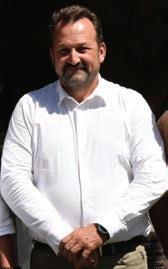
sheries select a block of aquaculture and sheries subjects; those who want deeper technical training later can return for a three-semester, postgraduate specialisation in aquaculture and sheries. The approach re ects Hungary’s labour market: demand for new pond and intensive-system managers uctuates, and courses typically run when cohorts reach a viable size. Recognising Hungary’s distinctive governance of inland waters—state ownership of aquatic resources and leased shing rights—the faculty has also co-designed a master’s-level programme for angling managers with sector partners. It targets those who run angling societies and manage reservoirs, lakes, and river stretches but lack a rounded mix of ecology, technology, nance, and legal knowledge. The rst cohort graduated recently, and the faculty envisages repeat intakes to professionalise stewardship across an estate of roughly 150,000
hectares managed through more than 2,000 angling clubs. The faculty has also introduced an “animal health engineer” BSc intended to bolster farm-level health capacity across species, including sh. Graduates would not replace veterinarians but would extend veterinary guidance through prevention, monitoring, and day-today health management in farms and aquaculture units.
The laboratory houses recirculating aquaculture systems (RAS) at several scales—300 litres, 1,000 litres, and around 10 cubic metres—alongside two greenhouse halls dedicated to aquaponics and a containerised hatchery unit. The lab was established in 2015 and later upgraded through a major grant, with production and research areas clearly separated from ltration “hearts” built around drum lters, UV, and bio lters. The lab teaches students, runs experiments, and produces fry and ngerlings for farms under contract. Because space and water are limited, it focuses on early life stages rather than market sh. It also keeps costs down by manufacturing small batches of experimental pellets inhouse—vital when commercial suppliers will not mill bespoke 10–20 kg lots.
On the aquaponics side, the team uses ltered RAS e uent to feed ra beds and ebb-and- ow troughs. Duckweed is cultivated as both a water-cleaning plant and a protein ingredient in feeds for the sh. Winter experiments o en shi to watercress, which tolerates low temperatures and short days, keeping research moving through the o -season. Some of the herbs and vegetables produced in the aquaponics trials feed into the faculty’s nearby food unit; basil for pesto is a favourite example.
Much of the research focuses on feed formulation, digestion, and the sh microbiome. One strand replaces a portion of shmeal with duckweed, tested at inclusion rates such as 7.5, 15, and 30 percent in isonitrogenous, isoenergetic diets dried at low temperatures to protect amino acids and vitamins. Another strand evaluates black soldier y meal as a protein source for African cat sh. At around 30 percent replacement, growth
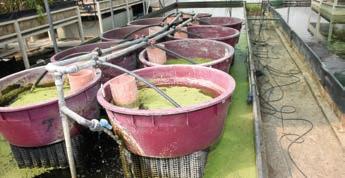
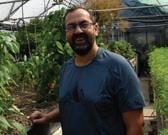
r il n Fe r is responsible for t e laboratory of fis biolo y and aquaculture ere students and researc ers are or in on ultiple e peri ents
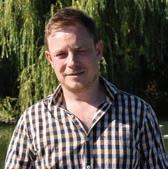
r ter rsony runs trials in ca es placed in a la e t at s ould benefit de and fro an lers for aluable fis species suc as European perc and co on carp
held steady against control diets; full shmeal replacement is technically possible with amino-acid supplementation, but at present is uneconomic given input prices. Alongside growth, the team tracks llet quality, fatty acids, o - avour, and chitin e ects, and it has studied microbial risks that insect substrates could introduce into closed systems. The lab targets two species for sale to farmers: common carp and African catsh. It carries out arti cial propagation and rears fry and ngerlings to order,
typically selling African cat sh at 3–5 g a er about four weeks. Warm groundwater resources make cat sh farming attractive, and Hungary has become a leading EU producer of African cat sh by pairing thermal water with intensive systems. The lab prioritises spring and summer batches. Common carp work clusters in April–May; African cat sh lls the warmer months. Across a production run, a single system can raise on the order of tens of thousands of African cat sh juveniles per batch, with automatic feeders controlling ration frequency and incremental increases to match growth.
A short drive from campus, the faculty collaborates with the local angling association at a 60-hectare reservoir shaped like a pair of trousers where the depth in the two legs is 2-3 m versus 5-6 m in the deeper parts of the pond. The water comes via the Keleti irrigation channel from the Tisza. Here Dr Bársony operates oating cages as a semi-intensive nursery, rearing species that are hard to source in the right sizes for stocking, then releasing them directly to the water at the season’s end. Trials have included European perch (Perca uviatilis), tench (Tinca tinca), pikeperch (Sander lucioperca), and common carp, with feed delivered by automatic feeders and oxygen managed by pumping through the cages and adding aeration as needed. In one study, European perch was introducedat 50–60 g in May and reached around 150 g by October. The point is not only growth. By rearing sh in the very water into which they will be stocked, the programme improves acclimatisation to local temperature regimes, oxygen dynamics, and plankton communities, boosting post-release survival. The cages also serve as “recovery wards”: large, catchand-release carp accumulate mouth injuries under intense angling pressure and can be held and rehabilitated before returning to the shery, protecting the trophy sh that underpin the venue’s appeal.
The aquaculture unit is small by design but the training footprint is wide. Undergraduate, master’s, and doctoral students use the facility for theses and internships that mix research with production tasks: induced spawning, sorting, diet formulation, system maintenance, and data collection. The lab hosts four to ve PhD candidates at any time, and each year several BSc/MSc theses are completed on site. Because Hungary’s aquaculture sector is intimate—“everybody knows everybody,” as Dr Fehér puts it—placement is o en relational. Farmers call the lab when they need people; the lab vouches for students whose practical skills and attitude t a role. Over the past decade, a steady stream of graduates has moved into intensive systems, hatcheries, and pond farms. For international students, the faculty’s English-language degrees and Debrecen’s campus infrastructure make the lab a convenient internship base within walking distance of dorms.
The University of Debrecen’s aquaculture pro le is not about scale. It is about t: aligning teaching to the labour market; building research platforms that double as production units; designing RAS and aquaponics systems that are simple to run; and targeting research questions at the material problems of sh farming and sheries management. This approach results in graduates who can run a hatchery experiment in the morning, adjust a bio lter in the a ernoon, and brief an angling-club board in the evening. They can carry out feed trials that weigh protein prices and palatability alongside growth rates and sh welfare. And they contribute to securing the future of the Hungarian aquaculture sector at a time when interest in pond sh farming among young people in many European countries is dwindling.
The Hungarian Aquaculture and Fisheries Inter-branch Organisation, known by its Hungarian acronym MA-HAL, is the umbrella body that links pond farmers, recirculation aquaculture producers, processors, traders, researchers, and educational institutions across the country.
Formed in 2017 through the merger of two legacy associations, MA-HAL represents the majority (>90%) of the national aquaculture output. The organisation has a strategic cooperation agreement with the Hungarian mirror platform of the European Aquaculture Technology and Innovation Platform (HUNATiP).
MA-HAL is an interbranch organisation rather than a producer organisation. As an interbranch body, it convenes actors across the supply chain to promote best practice, gather and analyse market information, forecast production potential, support coordinated marketing, and explore export opportunities. It also contributes expert input into national rulemaking, promotes sh consumption, strengthens origin and quality protection, backs vocational and higher-education training, and represents the sector in domestic committees and EU fora. Its functions include advocacy, coordination, knowledge transfer,
and the encouragement of innovation through national and EU projects. The board is chaired by president Nándor Puskás and the organisation comprises over a hundred entities, including major farms, processors, universities, research institutes, and angling organisations whose activities encompass traditional pond management to recirculating systems, product development, and market building.
Much of MA-HAL’s day-to-day work is supporting a small but complex value chain. A portal on its website aggregates grant calls, legal updates, downloadable documentation, health guidance, training opportunities, and market price tools from the national research institute, making it a single point of reference for farm and factory managers. The publications section maintains current issues of Halászati Lapok, a trade journal, annual reports, health materials, and recipe booklets that translate sector messages for consumers. MA-HAL events mix public-facing promotion with professional networking, such as a National Fish-Cooking Competition, a Fishermen’s Ball, and an Aquaculture Expo, alongside technical roundtables, sh-health training, and cross-border workshops.
MA-HAL’s signi cance is clearest when set against the pro le of Hungarian aquaculture itself. The sector has two main pillars. Intensive aquaculture produces roughly 4,500 tonnes a year, an estimated 95 percent of which is African catsh, with smaller contributions from trout and sturgeon; this segment is increasingly vertically integrated from production through processing and retail. The larger pond-farming pillar covers about 27,000 hectares and yields some 18,000 tonnes of food sh centred on common carp, which accounts for roughly 82–85 percent of pond output. Pond systems are multifunctional assets. Beyond sh, they deliver ecological services, water management, and climate modulation. Holding water locally, slowing releases, and integrating pond out ows into wetlands or irrigation can bu er the country against increasingly volatile hydrology. At the same time, the biological engine of pond farming is plankton-based polyculture—an approach re ned in Hungary over decades. Properly managed
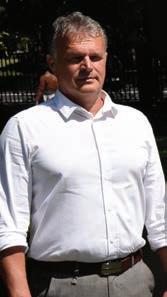
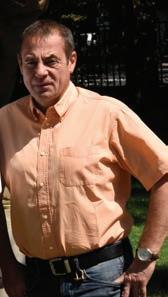
ndor us s left president of collaborates it rof st n S cs irector of t e nstitute of Econo ics ni ersity of ebrecen to establis t e alue of ecosyste ser ices pro ided by pond far ers
ponds generate the protein and micronutrients sh need from natural food webs, with limited supplemental grain and sparing use of arti cial feeds. In the best managed farms, feed-to-gain ratios for grain additions can be kept to around 1.5 kg per kilogram of sh produced. This makes carp-based pond farming a low-trophic, resource-ecient model with biodiversity bene ts that o en exceed those of natural waters in terms of observed species richness around ponds.
Those non-productive functions are not free. Mr Puskás points out that current public support for pond multifunctionality has lagged comparable agricultural payments. Historical valuations set the worth of these ecosystem services at €204 per hectare in the 2000s under rural development funding, but current support levels are closer to
€100 per hectare while arable supports sit at roughly triple that. Together with István Szűcs, Director of the Institute of Economics at the University of Debrecen, MA-HAL is working on new calculations that recognise both ecological and climate services with a view to scienti cally substantiating arguments for policy support at an appropriate level. Within pond production, herbivorous Chinese carps have lost share due to limited consumer demand at home, weak angling interest, and the disappearance of export markets that once absorbed signi cant volumes. This is despite the nutritional advantages of species such as silver carp, which contain polyunsaturated fatty acids. MA-HAL’s response combines product development and promotion: align o erings with modern kitchens through ready-to-cook and ready-to-eat
formats, and keep promoting the healthfulness of freshwater sh.
Policy debates around alien species illustrate the need for an interbranch voice. Grass carp is treated as an alien species under conservation law and cannot be stocked into natural waters, yet some managers argue for a more nuanced ecological assessment given its potential role in non-mechanical vegetation control. MA-HAL’s forum helps keep that debate constructive, balancing conservation priorities with practical water-management needs. Climate volatility and wildlife interactions are also topics that MA-HAL is engaged in on behalf of its members. Pressure from sh-eating birds, notably cormorants, is considerable. Warmer weather allows them to hunt sh in winter as well, due to the lack of ice on the ponds. On the other hand, in warmer water the sh can be fed which accelerates growth. The sector is testing new winter-feeding regimes built around low-protein, high-energy diets with easily mobilised polyunsaturated fatty acids, alongside revised dosages and schedules. In parallel, digitalisation is moving beyond simple buoy-based monitoring toward early-warning systems that fuse in-pond data with weather forecasts to ag risk before catastrophic events occur. MAHAL convenes the research partnerships behind these trials and helps disseminate outcomes across farms and processing plants.
Infrastructure modernisation is another priority. With precipitation patterns becoming less predictable, investments in controllable water infrastructure, water recirculation inside farm systems, and renewable energy
are advancing. The aim is resilience: keep water in the landscape, reduce energy exposure, and stabilise production for processors who need reliable raw material. MA-HAL emphasises that it is not a producer organisation in the EU sense. Many Hungarian farmers are reluctant to pool marketing, for reasons of history and trust. The interbranch model is therefore a pragmatic t that still delivers coordination, advocacy, and shared services without requiring members to sell through a single commercial vehicle. The broad membership pro le helps MA-HAL mediate between production, conservation, and recreation, especially where pond
operations intersect with biodiversity, water management, and public access. It also enables the organisation to push for the development of skills through vocational courses and continuing professional development.
MA-HAL’s value to Hungarian aquaculture and sh processing lies in its coverage and its range. It bundles
sector advocacy with technical coordination, quality assurance, training, events, and promotion. It moderates the debate between pond farmers and intensive cat sh producers, factory managers and chefs, conservationists and water engineers. It represents the sector at home and abroad, and it offers practical tools that help farms and processors modernise in the face of climate stress and shi ing markets. In a country where aquaculture’s footprint is small but where ponds play outsized ecological and hydrological roles, MA-HAL plays a critical role thanks to the depth and breadth of its membership.
Angling is politically, economically, and environmentally signi cant in Hungary.
Recreational shers are organised into a multitiered structure of associations, topped by a national federation, which carry out a range of activities directly and indirectly related to shing.
Hungary is a nation of anglers. More than a million people are registered to sh, making angling one of the country’s largest mass-participation pastimes and a signi cant social institution. The national federation, MOHOSZ, describes itself as Hungary’s largest networked civil organisation, and its activities in recreation, tourism, nature protection, and data collection gives it unusual weight in public life.
A national federation with several roles
MOHOSZ is not a simple membership body. Through a 2019 government agreement it became a public task–performing organisation, assuming responsibility for 38 state functions tied to sheries management and angling. In practical terms, MOHOSZ coordinates access to, and stewardship of, an extensive estate of state-owned natural
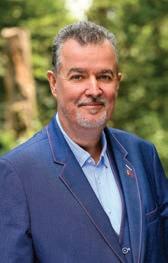
waters. According to Dr István Dérer, director general of MOHOSZ, the federation oversees 140,000 hectares across 1,310 water bodies, a scale that is unusual in Europe. This role sits alongside responsibilities including competitive sport, youth education, university-level training for shery managers, and restocking programmes that favour native species. The organisational system beneath the centre is three-tier and countrywide. As of the end of 2023 it comprised 25 regional member federations, 1,186 local angling associations, and 17 special-status members, together forming a wide network for governance and service delivery on the ground. Angling is economically relevant well beyond the value of sh. The federation’s own analysis suggests that when a kilogram of sh is caught by an angler rather than bought, the total nancial contribution to the economy—licences, tackle, bait, fuel, accommodation, etc.—can be roughly ve times higher than the value of the sh. This is one reason MOHOSZ links angling policy to tourism, local services, and regional development. Public funding is part of the picture, but not the whole of it. Between 2014 and 2024 MOHOSZ received around HUF4.5 billion (EUR11.4 million) in budgetary support; over the same period, revenues from state angling permits surpassed HUF10.5 billion. The federation’s hybrid model—state tasks, income from shing licences, and members’ contributions— underpins stocking, monitoring, digital systems, and sport events that in turn drive participation and spending.
The Hungarian stretch of the Danube is undammed, yet upstream impoundments and retention in neighbouring countries reduce water ow in the river. The policy response in Hungary emphasises retaining water in the landscape and MOHOSZ engages directly with
four ministries on these issues, feeding sheries and angling interests into policy formation even though decisions rest with government. Water-scarcity compounds impacts of climate change such as drier seasons. Warmer conditions favour some predators such as European cat sh, but other species face pressure from habitat alteration and winter conditions that, for instance, leave pikeperch more exposed to cormorant predation. These are not abstract trends; they show up in catch statistics, stocking choices, and the federation’s list of supported species developed with scientists to strengthen biodiversity in natural waters.
MOHOSZ’s stocking policy emphasises native species and ecosystem function. The federation is a major buyer of farmed sh for restocking—about a third of national aquaculture output, or roughly 6,500 tonnes per year—making it a critical market for pond farmers. The two parties, MOHOSZ and the farmers, hold discussions to maintain stability in sh prices and volumes. The ambition is to shi stocking gradually away from a carp-dominated pro le, though angler preferences and the tradition of common carp consumption, keep demand high. Invasive aliens can be removed without limit, an approach that aligns angling practice with conservation objectives. Predator management is an area of practical cooperation. MOHOSZ supports non-lead-containing ammunition and controlled cormorant culling on shponds and natural waters responding to estimates that recent cormorant consumption exceeded the total take by anglers on natural waters.
One hallmark of MOHOSZ’s modernisation is its digital infrastructure. The HORINFO system underpins licensing and data, while the HORGÁSZ mobile
app, launched in 2024, brings registration, the digital angling card, e-logbook functions, and online purchase of area tickets into a single interface. The app is integrated with horgaszjegy.hu, a MOHOSZ website to register anglers, so anglers log in with existing credentials rather than creating new accounts. Compliance is enforced by a large onthe-ground presence. Around 1,600 professional sh guards, supported by a similar number of volunteers, conduct licence checks, record infractions, and act as eyes and ears for water quality incidents. The federation equips many guards to take basic water measurements and to report rapidly to authorities when needed. Rules place personal responsibility on anglers for the cleanliness of their shing spot, and local schemes—such as a paid rubbish bag service around Lake Tisza—contribute as well to the sanitation of shing sites. MOHOSZ runs school clubs and summer camps for thousands of children, framing angling as hands-on nature education that builds environmental literacy as well as skills. The federation also promotes sh consumption, arguing that wild or semiwild sh from natural waters o er better meat quality than industrially farmed marine species. This nutrition message is now paired with a broader public campaign to raise domestic sh consumption, currently among the lowest in the EU, and to popularise the preparation of traditional and modern sh dishes.
Angling in Hungary is more than recreation. It is a mass civic activity that funds local environmental stewardship, teaches children about nature, shapes tourism choices, and supplies data that in uence river and lake policy. The federation at its centre is part sports body, part nature service provider, part digital authority. Thanks to these di erent roles MOHOSZ serves Hungarian society in ways that angling federations in other countries can only dream of.
Fish farming has an illustrious history in Hungary, where sh have long been grown in earthen ponds and more recently in tanks in various intensive systems. Supporting sh farmers are scienti c research institutions of which MATE HAKI is one of the best-known.
The Research Center for Fisheries and Aquaculture (HAKI), part of the Hungarian University of Agriculture and Life Sciences (MATE), marks over 115 years of research, development and innovation in freshwater aquaculture and sheries. Its mission is to lay a robust scienti c foundation for sustainable sh production and management—from pond systems to natural waters—while delivering expertise both nationally and internationally.
infrastructure for most purposes
HAKI leverages a multi-departmental structure and a comprehensive gene bank to foster interdisciplinary exploration. A notable resource is its extensive experimental infrastructure, which includes 82 earthen ponds covering some 30 hectares, alongside
combined systems such as pond-ina-pond and cage-in-a-pond arrangements. It is also home to the country’s largest experimental recirculating aquaculture system (RAS) with a total volume of 160m3, supporting intensive and precision aquaculture e orts. HAKI also hosts a gene bank for common carp and sturgeon species to conserve genetic diversity and facilitate breeding programmes. Beyond research, HAKI is involved in transferring knowledge and technology internationally. It plays a strategic advisory role in policy implementation, maintains the editorial o ce of Halászat (Hungary’s longest-running sheries journal), and hosts the annual National Scienti c Conference on Aquaculture and Fisheries—held for over 40 years. The centre engages actively with FAO, FEAP, EUROFISH, EAS and other international organisations, while contributing to aquaculture development across Asia, Africa and Central America.
At the core of HAKI’s expertise lies the department of sh biology, which spans both fundamental and applied
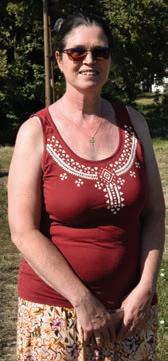
su sanna S ndor ead of t e F S utrition esearc roup Fis eries esearc Centre un arian ni ersity of riculture and ife Science
research into genetics, physiology, immunology, and nutrition. The sh nutrition research group focuses on identifying novel feed ingredients and creating innovative diets for
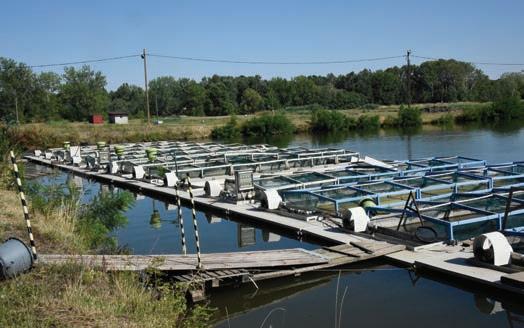
freshwater species. It tests these diets across pond and intensive systems, and examines how the new diets a ect sh health, meat quality and safety. Zsuzsanna J. Sándor, a senior research fellow and head of the sh nutrition research group explains how climate change in uences common carp feeding strategies and indeed the feed itself. Warmer winters o er farmers the possibility to feed the carp in winter too thereby maintaining or even increasing the growth rate. However, the feed needs to be adapted to the cold rearing conditions, and Dr Sándor points to the need for further studies to establish the optimal protein energy ratios in carp feeds when water temperatures are six degrees and above.
Other experiments concerned the use of distillers’ dried grains with solubles (DDGS), a by product of bioethanol production. This is a source of protein and energy and is commonly used in animal feeds. Dr Sándor’s team discovered that it could substitute up to 30% of the corn or other plant ingredients with DDGS in feed for cat sh. Carp gave more promising results as they are omnivorous and could handle even a 40% replacement of vegetal ingredients with DDGS. Dr Sándor is concerned, however, that hotter weather and lower precipitation
will negatively a ect corn harvests in Hungary which could threaten the production of DDGS. Among the other trials Dr Sándor has been involved in, one tested the potential bene ts of black soldier y larvae oil as a component in hybrid African cat sh and European cat sh diets. Three diets were compared, where one with sh oil and rapeseed oil in a 1:1 mixture was the control; the second substituted 50% of the sh oil rapeseed oil mix with larvae oil; while the third replaced the sh oil rapeseed oil mix completely with larvae oil. The results for both species showed similar sh growth between dietary groups, but levels of omega-3 fatty acids in the body decreased and those of omega-6 fatty acids went up with the increase in larvae oil inclusion.
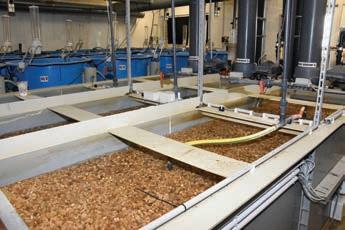
recirculation aquaculture syste allo s researc ers to conduct e perients it species culti ated intensi ely suc as frican catfis
Parallel with this a general tendency was observed in antioxidant capacity of liver, indicating that dietary use of black soldier y oil could be associated with potential health bene ts for sh. Taken together with other results, the study showed that black soldier y larvae oil was a suitable alternative to sh and vegetable oils.
Another study looked at the impact on growth performance and reproductive success in common carp when feeding it on di erent diets, one without shmeal or sh oil but with vegetable meal and linseed oil; another feed had moderate levels of shmeal and sh oil, while the third was a traditional cereal-based diet composed primarily of winter wheat. The results showed that the traditional cereal-based diet was less e cient than either of the other two diets which had comparable outcomes. However, the use of linseed oil in the diet had a detrimental e ect on gonadal development and the researchers advised against the use of a linseed-oil-supplemented plant-based diet for common carp being raised as broodstock.
Key research areas at the department of aquaculture technology include intensive culture methods for perciformes, common carp, and sturgeons, broodstock management and articial reproduction, juvenile rearing techniques for both fattening and restocking, species and technologies diversi cation in combined pond-RAS production systems, and modelling to optimise technology, inputs and climate adaptation strategies. Current ongoing research includes experiments to intensify common carp pond production. This species is traditionally grown rather extensively in ponds, and intensi cation would shorten the production cycle and reduce emerging wintering risks of bird predation and illness susceptibility in one summer-old juveniles. The department also aims to demonstrate to sturgeon farmers the e ects of environmental enrichment
during larviculture for juvenile restocking in natural waters. Likewise, the department developed methods for triploidisation of pike-perch and its hybrids with Volga pike-perch, testing and documenting its feasibility for both farming and surrogate production purposes. Uroš Ljubobratović, the head of the department, has his main research background in the reproductive cycle management of domesticated pikeperch. His recent study demonstrated di erences in gametogenesis dynamics in pike-perch populations originating from di erent latitudes when reared in common conditions. The department’s most recent research focuses on the spawning behaviour of two nesting species, pike-perch and largemouth bass, de ning and implementing behavioural ovulation indicators to improve sh welfare and commercial feasibility of arti cial reproduction.
The department of hydrobiology centres its research on sustainable recreational sheries. It develops sampling techniques tailored to these sheries by combining conventional approaches with hydroacoustic and molecular methods. It assesses the ecological impacts of invasive species—such as bullheads, gobies, and the Amur sleeper—and designs potential eradication programmes. Additionally, it evaluates the e ects of recreational shing practices—like ground-baiting, increased sh biomass and catch-and-release—on nutrient dynamics in lentic habitats. In support of sustainable pond aquaculture, the department examines how e uent water in uences zooplankton and macroinvertebrates in adjacent ecosystems, explores links between farming technologies and pond nutrient cycling, and assesses the ecosystem services o ered by pond-based aquaculture.
With its research infrastructure, tradition for scienti c investigation and, above all, its people, HAKI o ers solutions to the constantly evolving challenges faced by the freshwater aquaculture industry.
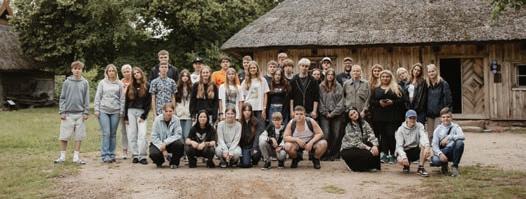
ian and er an participants
Teenagers from Latvia and Germany visited a traditional shing centre to learn how to preserve coastal sheries customs while using new technologies to adapt them to the modern day.
In July this year, Jūrmalciems on Latvia’s Baltic coast hosted an international youth summer camp, bringing together teenagers from Latvia and Germany to explore the past, present, and future of sheries. Dedicated to coastal and inland shing and supported by the Latvian Fish Fund, the camp marked its tenth edition in the past nine years. In total, 30 young people aged 14 to 18 took part—22 from Latvia and 8 from Germany.
Jūrmalciems is one of Latvia’s traditional shing centres, where coastal shing practices established during Soviet times have been preserved. Youth camps were already organised here in the 1990s and early 2000s, and in recent years they have taken place along the Baltic Sea and Gulf of Riga coastlines,
involving young people from Latvia, Lithuania, and Germany.
The camp aimed to raise awareness among young people and teachers about the historic shing traditions of Jūrmalciems, while also presenting modern solutions and showcasing how local customs can be enriched with new technologies. Participants explored the history of shing, current challenges in the sector, and opportunities for future development. They also learned about the latest research on Baltic Sea
sh stocks. A central ambition was to inspire them to imagine new business opportunities linked to sheries.
The number of coastal shers in Latvia has plummeted—from 250 in 2004 to just 140 in 2025, according to the Ministry of Agriculture. With the average age of shers rising, it is becoming increasingly di cult to introduce new technologies and modernise the sector. One solution is to combine sheries with other industries, such as tourism. This not only helps preserve the identity and heritage of coastal communities— both tangible and intangible—but also creates new economic opportunities.
Jūrmalciems is more than just a modern shing centre—its history is closely tied to the development of Latvian coastal sheries. In 1937, the community landed 561 tonnes of cod, making it the second most productive shing site in Latvia a er Liepāja. That same year, President Kārlis Ulmanis visited Jūrmalciems, showing deep interest in the lives and needs of the shers. He praised their achievements and suggested using seaweed as fertiliser to ensure good harvests in sandy coastal soils. The visit reinforced the idea that in Jūrmalciems, the coastal way of life could thrive with national support.
Today, Jūrmalciems’ shing traditions blend with innovation. Local shers such as Oskars Kadeģis, Jānis and Dzintars Ziemelis, and Ivars Roga are working to preserve their heritage while adopting modern technologies and comforts. Knowledge gained abroad has helped them create a more attractive environment for younger colleagues. The Latvian Fishermen’s Federation works closely with teachers from the Oskars Kalpaks Secondary School
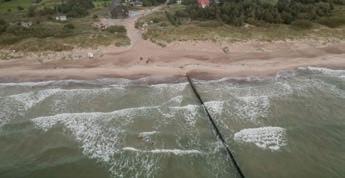
ocated on t e at ian coast r alcie s t e site of t e yout ca p as a lon istory of yout ca ps and an e en lon er one of fis eries
in Liepāja and certi ed camp leaders to ensure that the younger generation is educated on Baltic Sea sheries and ecological issues. For coastal shers, compared to large trawler owners, it is especially important to preserve traditional knowledge and pass it on. This includes exploring e-technologies, short supply chains, logistics solutions, and in the future, the use of arti cial intelligence.
The camp featured experts from the Ministry of Agriculture’s Fisheries Department, BIOR, the Nature Conservation Agency, the State Environmental Service, the University of Latvia, Riga Stradiņš University, Riga Technical University, the Latvian Fishermen’s Federation, and the Latvian Environment, Geology and Meteorology Centre, as well as certified nature guides and coastal fishers. Guest speakers included well-known Latvian TV host and angling champion Normunds Grabovskis, biologist and journalist Māris Olte, and representatives of the Latvian Rural Advisory and Training Centre.
The programme included lectures on the competitiveness of Latvian sheries and Baltic Sea sh stock research; exploration of the ecosystem-based approaches to sheries; practical work such as seine hauling and sh fry counts; discussions on defending the rights of coastal communities; masterclasses in sh smoking and making shing gear; as well as excursions to learn from coastal community development.
Participants were tasked with creating a video and an educational session about the shers of Jūrmalciems and their e orts to preserve and develop their traditional way of life. These were presented to teachers and pupils in Liepāja and Paderborn (Germany) and published on Facebook and the regional media outlet liepajniekiem.lv. The organisers hope the camp will inspire similar initiatives across Europe, encouraging cooperation, knowledge exchange, and greater engagement of young people in the sheries sector.
Ēvalds Urtāns, Latvian Fishermen’s Federation
Since 2022, Latvia’s coastal shers have had access to direct development support from the European Maritime, Fisheries and Aquaculture Fund (EMFAF)—the rst time such targeted aid has been available. This has not only helped the sector survive but also signi cantly boosted revenues.
Coastal fishing in Latvia is relatively small-scale, providing local communities with jobs and fresh fish for the local market. Out of Latvia’s average annual catch of 49,000 tonnes, only about 3,000 tonnes (just over 6%) are landed by coastal fishers. Officially, 140 coastal fishers are registered, but in reality no more than 50 depend on it for their livelihood. Over the past decade, their numbers have fallen by a third. The work is tough, income unstable, and fishing opportunities are limited by both weather and strict national regulations. For example, in the Gulf of Riga a full ban for 2.5 months each year restricts coastal fishing, while seals increasingly damage gear and catches. As a result, many fishers abandoned the trade and sought work abroad.
Five years ago, the outlook began to change. The association Mazjūras zvejnieki (Small Sea Fishers) lobbied successfully for a special EMFAF programme, Support for Coastal Fishers. Initially funded with €2.3 million—later topped up with another €1 million—the scheme provided grants of up to €30,000 per
project, fully funded and paid in advance. Despite the modest size of the programme, it has revived many small-scale fishing enterprises and restored faith in the sector’s future. Data from the Rural Support Service (RSS), which administers the scheme, show that revenues of 45 supported companies rose from €1.14 million to €2.06 million over four years.
Rinalds Vācers, Director of the RSS Fisheries and State Aid Department, explains that previously, coastal fishers had almost no access to EU support, which undermined the sector’s survival. Now, investments enable them to process the fish themselves—chilling, gutting, smoking, vacuum-packing—and sell at a higher value. At a time of declining fish stocks, he says, every fish matters. Support has also funded more selective, seal-safe fishing gear and improved working conditions. Equipment has been purchased to make handling nets easier, and vehicles for transporting fish and gear have been acquired, among other improvements. For the first time since EU accession, support has reached coastal fishers in a way that gives them and their families hope that fishing can still provide a living—and the belief that fishers are needed, Mr Vācers says.
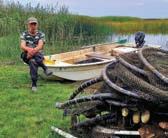
ndris C rulis C air an of t e association a ras e nie i stresses t at coastal fis in in at ia is en iron entally friendly and carried out by only a fe do en fis ers
Edgars Zviedris, a ninth-generation sher from Saulkrasti, recalls how a few years ago he pushed his nets to the sea in a wheelbarrow never dreaming he would one day a ord proper transport. Through three projects under the coastal support scheme, his enterprise Silzviedri has bought a quad bike for hauling nets and catches, a trailer for selling sh, an ice machine, and storage containers. His income has doubled in three years, allowing him
not only to support his family but also to modernise gear.
Across the Gulf of Riga, Ivars Cīrulis of Ivars C has also carried out three projects, purchasing a quad bike, a computer for catch reporting, a small processing unit, and a refrigerated van with EMFAF and LEADER support. The van allows him to transport sh from more distant shing grounds near Ventspils back to his home and markets in Riga.“I could never have earned enough from shing alone to buy all this equipment, which now makes my work easier and provides a more reliable income,” he says.
The association Mazjūras zvejnieki has been central to these successes. Its chairman, Andris Cīrulis, was awarded the national prize “Lielais loms” in recognition of his work. The group has launched the website www. piekrasteszivis.lv, awareness campaigns on sh consumption, and cooperates with research institutions on new selective, seal-proof shing gear.
Yet looming EU control regulations, due in 2028, are raising alarm. Requirements such as species-level catch reporting at sea, electronic weighing and labelling, and GPS tracking of transport are seen as unrealistic for Latvia’s small-scale shers, who typically work in 4–8 metre open boats with only basic equipment. The ocials who wrote these rules clearly don’t realise our shers go out in tiny boats on open seas, says Mr Cīrulis, “I’d gladly take them out to show what our work is really like.” For Latvia’s few dozen remaining coastal shers, the hope is that recent EU support will not be undone by impractical regulations.
Iveta Tomsone
Head
of Publications, Latvian Rural Advisory and Training Centre
The Latvian shing industry is calling for more resources to be invested in studying the causes behind changes to the Baltic Sea ecosystem.
Like their counterparts elsewhere in the Baltic, Latvian shers face growing challenges from European Commission decisions. One key change came into force on 9 January 2024, when Regulation (EU) 2023/2842
amended the EU sheries control framework. The rules, phased in until 2028, include stricter requirements for landing and weighing catches. From July 2024, the margin of tolerance in catch reporting was reduced to 10% per species, rather than 10% of the total
catch. This has hit the Baltic Sea sheries hardest, particularly in the Gulf of Riga where, in addition to sprat and herring, shers also target ve other species. Many fear they face a choice between compliance and giving up shing altogether.
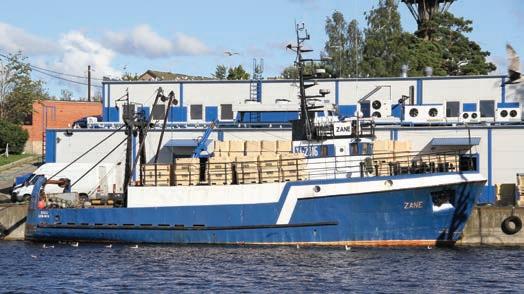
escription and se entation of t e altic Sea includin t e ulf of i a offs ore eet in
To mitigate these impacts, a working group was quickly formed, including representatives from the Ministry of Agriculture, the scienti c institute BIOR, the State Environmental Service, and shing organisations. Negotiations with the European Commission secured more exible weighing procedures, based on ve samples per landing, valid until the end of 2026. Looking ahead, one option is to obtain EU-recognised port status, which would allow to use the previous tolerance of 10% of the total catch. So far, only one certi ed landing site exists in Ventspils, while challenges concerning the separation of sh from ice prior to weighing remain.
In 2023–2025, Latvia reduced overcapacity by scrapping eight inactive vessels, and one vessel will be scrapped in 2026, from the VL2440 o shore trawler segment, in line with eet balancing requirements.
But the future of the eet depends on sh stock levels. According to ICES
data, stocks continue to uctuate. Once considered stable, Gulf of Riga herring is now assessed to be in sharp decline for 2026.
Industry representatives stress that ecosystem changes—factors beyond their control—are having severe effects on Baltic sh stocks. Cod has been o limits for a decade, and other species now appear at risk. State institutions should allocate more resources to scientists so they can investigate the causes of these ecosystem changes that directly a ect sh stocks in the Baltic Sea, they say. The industry is represented by two organisations, The National Fisheries Producers’ Organisation (Nacionālās zvejniecības ražotāju organizācija, NZRO), and the Latvian Fishermen’s Association (Latvijas Zivsaimnieku asociācija, LZA). The former is a

Europe-recognised producer organisation uniting Latvia’s 12 largest shing companies which it represents at both national and EU levels, while the latter brings together all Latvian shing companies operating in the Baltic Sea and the Gulf of Riga.
Latvian shers were pioneers in certifying Baltic sprat and herring under the Marine Stewardship Council (MSC) standard. This allows them to use the blue MSC label and access premium export markets. Today, Latvia is the only country with an MSC certi cate for herring in the Gulf of Riga. A new audit this autumn will extend certi cation for another ve years, while MSC certi cation of Baltic sprat is expected by the end of 2026.
Latvia’s shing companies continue to invest in new equipment and facilities under the EMFAF 2021–2027 Fisheries Development Programme, with €10 million already committed. Plans for 2025 include new repair facilities for vessels and shing gear. However, the sector highlights a lack of EU support for renewing vessels themselves which stands in the way of creating a more sustainable eet.
Viesturs Ulis, Chairman of The Board
The National Fisheries Producers’ Organisation (Nacionālās zvejniecības ražotāju organizācija, NZRO)
While global sheries landings have remained stable for decades, the volume of sh and seafood on the world market has been steadily increasing due to the rise in aquaculture production. In theory, it could be signi cantly higher, as valuable material is wasted and lost at every stage of the processing chain, from the point of origin to the plate. This indicates untapped potential that can still be harnessed.
According to the Food and Agriculture Organization (FAO), global sheries and aquaculture production reached a record high of 223.2 million tonnes in 2022, worth a record USD 472 billion. However, these data also include algae and aquatic plants, which can distort the picture. Nevertheless, the production of aquatic animals alone reached a record level of 165 million tonnes in 2022. This means that since 1961, the available quantity has grown almost twice as fast as the world’s population. In 1961, the global per capita availability of sh and seafood was just 9.1 kg per year, whereas by 2022, it had risen to an estimated 20.7 kg. This is in stark contrast to the predictions of empty seas and the imminent collapse of sh supply. Equally exaggerated are the claims regarding non-food uses, i.e. the proportion of seafood that is not used directly for human consumption. In 2022, it continued to decline, reaching only 20.8 million tonnes. Around 83% of this was used to produce shmeal and sh oil. The fact
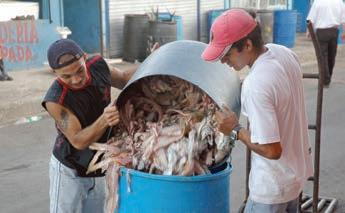
t is esti ated t at up to of lobal fis eries and aquaculture production is lost durin its ourney fro t e source to t e end consu er
that shmeal and sh oil volumes have remained almost the same is mainly due to the increased use of slaughterhouse waste and other by-products. They accounted for 34% of shmeal production and 53% of sh oil production. The main conclusion is positive: signi cant progress has been made in the trend towards the full utilisation of sh and seafood for human nutrition.
Accordingly, the outlook for sh supply in the coming years is optimistic.
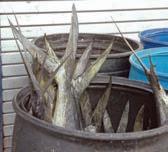
According to FAO experts, it is expected to increase by 10% to 205 million tonnes by 2032. This will be mainly due to the expansion of aquaculture production to 111 million tonnes, but sheries will also contribute 94 million tonnes. With this solid foundation, annual per capita consumption is expected to increase to 21.3 kg on average by 2032. And this will happen worldwide, on all continents. The only exception is Africa, particularly sub-Saharan Africa, where there are concerns about a potential decline in seafood consumption. According to the FAO, there are likely to be other signi cant shi s in the global seafood market. Rising incomes, urbanisation and changing dietary trends in many parts of the world are already having a signi cant impact on global trade ows. For example, the combined consumption of aquatic food products in Europe, Japan and the US fell from 47% to 18% of the total market between 1961 and 2021. Over the same period, the market shares of China, Indonesia and India rose from 17% to 51%. Since these countries are also major seafood producers, this is expected to have signi cant implications: while global exports of aquatic products accounted for 38% of total production in 2022, their share is projected to decrease to 34% by 2032.
As impressive as these gures and the forecasts derived from them may be, much of it is unfortunately based on speculation. This is because the database lacks completeness, accuracy and thus reliability, a shortcoming that more or less limits the credibility of some FAO forecasts. For example, in 2022, around half of the 208 countries with aquaculture production did not report any data to FAO. The ratio of non-reporting producers to total producers was 27:52 in Africa, 25:48 in the Americas, 22:48 in Asia, 8:40 in Europe and 17:19 in Oceania. Due to a lack of reports, the FAO could only provide approximate estimates for the corresponding data in these cases. For aquatic animals alone, this amounted to 13.3 million tonnes, and for algae to 736,900 tonnes.
Although these statements refer only to aquaculture, it can hardly be assumed that the situation in sheries could be fundamentally di erent. Especially since there is an even greater
risk that even the o cial reports contain some inaccuracies and errors. The sea is known to be wide and the night is dark, making control di cult. Smallscale, subsistence and recreational shing cannot be fully and comprehensively monitored. There is also illegal, unreported and unregulated (IUU) shing, the black catches of which can only be roughly estimated. Transhipments at sea are as di cult to monitor as landings in foreign ports, making it di cult to collect data on catches and trade statistics. Some countries do not even have vessel registers, which seriously undermines the quality of catch statistics. Missing, incomplete and poor quality data obscure the true situation and o en result in erroneous assessments of the performance of sheries and aquaculture.
Despite these di culties, the FAO is the only reliable source of global sheries and aquaculture statistics. Its FishStat
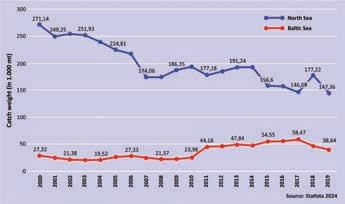
database is mainly based on annual data from national sources. Where national reports are missing or contain insucient or contradictory data, FAO experts estimate the gures based on the best available sources using recognised methods. This does not rule out minor errors but does allow for basic conclusions and statements to be made. One of these, for example, is the depressing realisation that, in total, up to 35% of global sheries and aquaculture production is lost annually on the way to and from the end consumer. Therefore, the target of a 10% increase in sh and seafood production by 2032 could potentially be achieved right now if we succeeded in eliminating the unnecessary waste of more than onethird of these valuable resources. The UN’s Sustainable Development Goal SDG 12.3 therefore calls on the international community to halve post-harvest losses in production and supply chains by 2030. It is an understandable and reasonable demand, but it requires enormous e ort to implement. This is because reductions do not depend on a single factor or a single change, such as the introduction of more e cient technologies. Minor errors and ine ciencies occur almost everywhere in value chains and contribute to these losses.
A complex approach is needed that not only holds politicians and
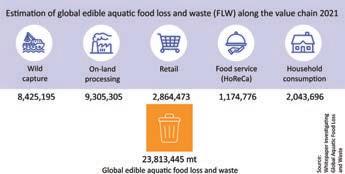
legislators accountable, but also requires the expansion of the required capacities and takes into account technological advances and socio-economic aspects. In order to develop appropriate strategies to reduce food loss and waste (FLW), a careful analysis of the baseline situation is needed rst:
•Where and when does FLW occur?
•What are the reasons for this?
•How extensive is the waste and what are the economic consequences?
•Which stakeholders and interest groups are most a ected?
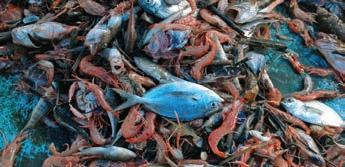
Previous studies in this area have shown that the FLW rate can be reduced not only by minimising physical losses of sh in the processing chain, but also by making better use of sh by-products and their nutrients. Fish by-products can be used, for example, for sh silage or feed and fertiliser. They are rich in protein and o en contain an abundance of essential amino acids. Some ingredients can be used as additives in the food industry, pharmaceuticals, cosmetic products, or in the manufacture of clothing and leather products. Even recycling as biodiesel is still more sensible than environmentally damaging dumping.
When it comes to the waste of resources, by-catch and discards in sheries are the rst things that come to mind for many. Every year, 90 million tonnes of sh are caught worldwide. However, as is well known, this is only a fraction of the actual catch, as most sheries also have unwanted by-catch, sometimes referred to as secondary catch, in addition to the target species, no matter how selective the shing gear is. A signi cant proportion
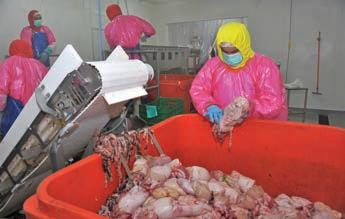
of this has been and is being dumped back into the sea, thus being lost to alternative uses. Discards a ect not only of by-catch species, but sometimes also target species, for example if they are too small, in poor condition or di cult to market. Sometimes there is simply not enough space on the shing vessel to take the catch on board.
For a long time, by-catch and discards were largely overlooked in sheries assessments. However, as environmental awareness has grown and concerns about over shing and sustainability have gained increasing public attention, the issue has become a signi cant topic of focus. It has now been argued that this is a waste of resources, when attempts were made to quantify the biological, ecological, economic and cultural impacts of discards. If catch and landing volumes cannot be determined accurately, this is even more impossible for by-catches and discards. Based on the little data available at the time on the subject, Alverson et al. 1994 (FAO. No. 339) estimated that by-catches and discards from commercial sheries range from 17.9 to 39.5 million tonnes per
year (average 27.0 million tonnes). The wide range of gures alone shows how uncertain the authors themselves were in their estimates. Nevertheless, an initial estimate was now available and understandably caused a stir. Around 40% of the world’s catch is thrown back into the sea, dead or dying. The study proved useful to NGOs critical of the shing industry, and they have since used it as an argument to accuse the industry of being wasteful and overly driven by pro t. Especially since the economic losses,
which probably amounted to many billions of dollars, were compounded by ecological damage that could hardly be quanti ed.
Regardless of the polemics and populism, by-catch and discards are more than just a nuisance. They distort the stock assessment database and are a source of error in the calculation of shing quotas. As a result, since the 1990s, by-catch recording has become a focus of research in sheries biology, leading to somewhat more accurate estimates. Observers travel on shing vessels and collect data. In addition, electronic technologies are employed to monitor shing activities, and logbook data, along with voluntary information from shers, is collected. This has signi cantly improved our understanding of the situation at sea, although there are still some areas where the data is still rather inaccurate and speculative. Based on data from 1992–2001, Kelleher (2005) estimates that an average of 7.3 million tonnes of sh are discarded worldwide. Discards vary considerably by region, species and shing method. Even this much more reliable gure is not accepted by everyone. Some
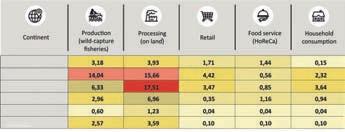
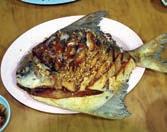
nli e in ric industrialised countries ere fillets and loins are preferred fis in ot er parts of t e orld is often prepared ole
believe it to be relatively close to reality, while others doubt the gures and suspect that they are too low. However, it cannot be denied that discards have fallen in recent years due to more selective shing gear, changes in regulations and better use of by-catch. The EU’s sheries policy also aims to end wasteful discarding practices and introduced a landing obligation in 2015, which has been in force since January 2019. Since then, the principle of ‘you catch it, you keep it’ has applied. All catches from stocks subject to a catch quota (TAC) must now be landed. However, the consequences of this requirement seem to have made some former critics change their views. In particular, ornithologists among conservationists are now warning that a ban on discarding sh at sea could also harm the marine environment, because other species now lack a food source. North Atlantic seabird populations are already declining, and the lack of food is tempting skuas to snatch pu n prey. The previously criticised ‘waste of resources’ is correct from an economic point of view, but for natural ecosystems, the discard is by no means ‘waste’. The total energy is preserved as the discarded sh serve as food for other animals, such as seabirds and crabs. Some authors also point out that by-catch in nets is o en made up of predators of the
target species. They follow their prey, so the simultaneous removal of prey and predators somehow balances out their relationship in the ecosystem.
The second largest source of losses in the value chain a er discards is the processing of sh on board shing vessels and on land. A considerable proportion of the catch is lost through gutting, deheading, lleting, trimming and skinning. Whether it ends up as waste or is recycled in a meaningful way depends on several factors. Cultural and geographical di erences also play an important role. The demand of regional markets and the dietary preferences of local consumers also in uence the type and quantity of waste. In general, in countries with higher incomes, convenient and easy-to-eat products such as llets or loins are preferred, which reduces the yield of sh parts consumed. By contrast, in countries with lower incomes, people tend to eat whole sh. It is less wasteful than consuming semi- or only partially processed products. Nevertheless, when all factors are taken into account, Asian countries still account for the highest post-harvest losses of aquatic food, at 37%. This is due not to consumption, but to losses during transport and storage. Europe is close behind, with almost a third. At the other end of the scale is Oceania, where, according to FAO data, less than 2% of the edible portion of sh and seafood is lost.
Food losses occur at almost every level of the processing chain. A 2021 report by the World Economic Forum estimates that we lose around 10–12 million tonnes of sh and seafood each year due to lack of refrigeration, improper storage or processing errors. Other sources put the loss of edible aquatic food as high as 23.8 million tonnes. These are only rough estimates, but they show the scale of the
problem. Basically, all areas of the chain are a ected, albeit to varying degrees. This ranges from excessive transport times and incorrect storage without adequate cooling to pest infestation that renders sh products unusable in many parts of the world. It is estimated that sun-drying alone accounts for around 30% of the world’s sh losses due to infestation by blow y and beetle larvae. Not only is there a lack of know-how and suitable processing technology for handling and preservation on board and on land, but also quite o en a lack of the general logistical conditions. In some areas, the power supply is unstable or even non-existent. Access to hygienic drinking water is not guaranteed everywhere, and the poor state of the road network complicates and delays the transport of perishable goods. Lack of cold storage makes it di cult to maintain a continuous cold chain, o en requiring indirect methods to preserve the product. In retail, losses occur when a sh is not sold in time and exceeds its sell-by date. These few examples show that good intentions and greater care on the part of those involved are not enough. Massive investments are needed to reduce food loss and waste. This is especially true for sh and seafood products, which are among the most widely traded foodstu s worldwide, and which require appropriate logistical conditions. According to FAO forecasts, 181 million tonnes of aquatic food will be traded and consumed annually worldwide at the regional, national and international level by 2030. The more o en a product is reloaded and temporarily stored en route from the producer to the end user, the higher the risk of damage or spoilage. Even in professional restaurant kitchens, sh and seafood are sometimes lost due to improper handling or human error in preparation. Despite taking great care, millions of ambitious amateur chefs in home kitchens also experience this. Reducing sh losses therefore remains an ongoing challenge for all of us. Manfred Klinkhardt
Portugal is a country that is traditionally associated with high capture seafood consumption, but the popularity of farmed sh and seafood is increasing. The combination of an extensive Atlantic coastline, favourable climatic conditions, and rich marine biodiversity provides strong foundations for growth of the aquaculture sector.
Shellfish farming has deep roots in Portugal and continues to thrive in the present day. The Algarve’s Ria Formosa is a hub for clam farming, particularly for the grooved carpet shell clam, which remains a key product for both national and international markets and represented more than half the aquaculture production value in 2023. Mainly produced in small farms in intertidal zones and estuaries, typically less than 1 hectare in size, production volume reached 5,900 tons in 2023, valued at €115 million. This represented 26% and 53% of the total volume and value produced, respectively. Mussel farming, a traditional practice in coastal and transitional waters, is another area of strength. Portugal produced around 3,300 tonnes in 2023, and the sector has been boosted by certified organic production and a strong export orientation. Oysters, especially from the regions of Aveiro, Setúbal, and the Algarve, have similarly become increasingly sought-after, particularly in gourmet markets and among French buyers.
Regarding the production of marine sh, the most signi cant species cultivated is gilthead seabream, with production volumes reaching 4,100 tons in 2023, an increase of 22% since 2022. At the same time, Portugal is also a major producer of at sh, where production of turbot and sole respectively reached 3,200 and 700 tons in 2023, generating a production volume of €46 million. The third major marine sh-species produced is European seabass. Production reached 1,700 tons in 2023, marking a 15% increase since 2022. Historically, freshwater species were the rst to be farmed commercially, and they remain relevant to domestic supply despite representing only 0.5% of the total production value today. The most signicant of these species is rainbow trout. It is farmed on a small scale, and production has uctuated over the years due to drought. Production levels are down 67% since 2020.
Production techniques re ect a mix of traditional practices and innovative
technologies. Floating cages are commonly used for species such as seabream and seabass. Bottom culture methods are widely applied to shell sh farming, such as clams and oysters, and are valued for their environmental friendliness and reliance on natural processes. More advanced approaches include Recirculating Aquaculture Systems (RAS), which allow species like at sh to be raised in controlled environments with minimal water use, and Integrated Multi-Trophic Aquaculture (IMTA), where sh, shell sh, and algae are cultivated together to promote resource e ciency and reduce negative ecological impacts.
Taken as a whole, the industry consists of 731 enterprises in 2022, 93% of which employed only ve or fewer people. Overall employment reached 2,014 people, but in full-time equivalents only 1,511, re ecting the widespread use of seasonal and part-time work. Shell sh aquaculture was the largest employer, followed by marine aquaculture, with freshwater farming employing very few workers. In 2023 extensive production methods represented 58.5% of production, while semi-intensive methods
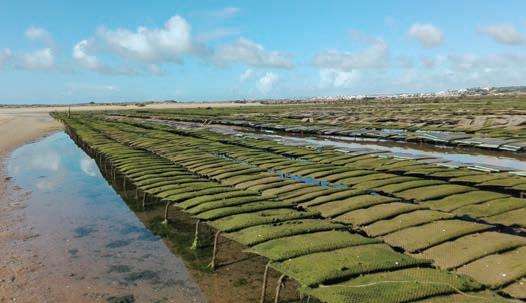
represented 10% and intensive methods represented 31.5%. In total, aquaculture production has increased by 19% between 2022 and 2023, with an increase of production value of around 40% from €154 million to €214 million. While Portugal only ranks 11th out of all EU countries in production volume, it has climbed to h place in terms of production value.
Despite its growing importance, Portuguese aquaculture faces a range of signi cant challenges. Environmental concerns remain at the forefront, where the expansion of aquaculture
risks increasing the pressure on marine and coastal ecosystems, particularly when farms compete for space with tourism, shing, and conservation interests. Poorly managed expansion can result in spatial con icts and environmental degradation, underscoring the need for strict site selection processes and sustainable operational models.
Market competition poses another major challenge. Portugal competes in a global seafood market dominated by large-scale producers, especially from countries with lower production costs. To remain competitive, Portuguese producers must continue to focus on quality, sustainability and innovation. They need to stand out by using certi ed production methods and strong branding that emphasizes both tradition and environmental responsibility. Domestic consumers, who have one of
the highest per capita consumptions of sh in the world, are increasingly conscious of food origin and sustainability. However, competing on price alone remains di cult in international markets. The Strategic Plan for Portuguese Aquaculture 2021-2030 aims to address the need for further sustainability efforts and a trusted certi cation process, as well as the internationalization of the Portuguese aquaculture industry. Among other e orts, the plan pursues initiatives that combat the pressures and new uncertainties for marine ecosystems introduced by climate change. Rising sea temperatures can a ect sh growth rates and ocean acidi cation can threaten shell sh production. Altered salinity levels and the spread of new pathogens further threaten marine species and could undermine the resilience of aquaculture systems. These
environmental shi s could particularly threaten the yields and long-term viability of shell sh farmers, who produce the bulk of Portuguese aquaculture value. The sector will need to invest in adaptive strategies, such as selective breeding for climate-resilient species and new technologies to mitigate environmental variability. Spatial planning must also incorporate the changing oceanographic, physiochemical, geochemical and biological conditions of Portuguese coastal waters to select the best sites for di erent aquaculture operations.
Despite the challenges presented, many of which are not unique to Portugal but rather occur globally in aquaculture, the outlook for Portuguese aquaculture is positive overall. O shore aquaculture o ers one of the most promising new areas for expansion, with projects such as a planned large-scale o shore sh farm in the Algarve region sparking excitement. Other new technologies, such as submerged cages and oating
platforms capable of withstanding harsh open-sea conditions, will be critical to realize this potential. Successful o shore expansion could help Portugal scale up production sustainably, while also reducing con icts with coastal tourism and conservation areas. Technological innovation will present a key driver of future growth. Automated feeding systems, real-time water quality monitoring, and digital farm management platforms are transforming the e ciency and sustainability of aquaculture operations. Genetic research and selective breeding programs promise to improve growth rates and disease resistance, while advances in feed formulations, particularly those reducing reliance on shmeal and animal-based ingredients, align production with sustainability goals. The adoption of these innovations will not only improve yields but also strengthen Portugal’s reputation as a producer of high-quality, environmentally responsible seafood.
Sustainability will remain a de ning feature of the industry’s development. Consumer demand for certi ed, traceable products is growing, especially in European markets. Organic aquaculture and IMTA systems, which demonstrate clear environmental advantages, are examples that are well positioned to
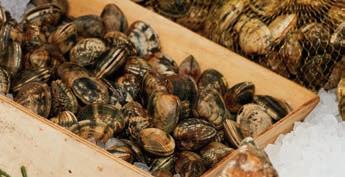
meet these expectations. Certi cation schemes such as ASC and MSC also provide competitive advantages, particularly in export markets where regulatory and consumer scrutiny is high. By emphasizing sustainability, Portugal can leverage its natural resources responsibly while appealing to environmentally conscious consumers.
Research and development are going to be vital in addressing the sector’s long-term challenges. Universities and research institutions, o en working in collaboration with industry, are already exploring innovative solutions to disease management, feed e ciency, optimal special planning and environmental sustainability. Expanding these collaborations will be essential in maintaining competitiveness and resilience. Market opportunities are also expanding, as global demand for seafood continues to rise and as Europe remains a key destination for Portuguese exports. Direct-to-consumer sales, including online distribution models, are reshaping the marketplace. These models allow smaller producers to access new customers while retaining a larger share of profits. High-end markets, particularly restaurants and gourmet retailers, are also showing strong interest in Portuguese aquaculture products, from seabream and seabass to oysters and mussels. Portugal can establish itself as a producer of premium, sustainable farmed seafood with the help of strategic branding, targeted marketing and the promotion of climate-conscious practices. In the process, it may even become a European leader in sustainable aquaculture.
Justus M. Dohmen, Euro sh, justus@euro sh.dk
Multi-use platforms may support renewable energy production, food security, biodiversity, and climate resilience at a single site, thereby relieving some of the pressure on marine ecosystems and potentially o ering a path to more sustainable ocean practices.
The ocean is becoming an overlooked battleground, where human interests compete for limited space and resources. Shipping lanes crisscross waters increasingly crowded with o shore wind farms, oil rigs, and aquaculture pens, while commercial shing eets chase o en dwindling stocks. At the same time, climate change is jeopardising marine habitats, threatening biodiversity and
global food supplies. Marine Multi-Use Platforms (MUPs) may o er a solution to these sometimes con icting activities and their impacts. MUPs bring together activities from di erent sectors in one place to make more e cient use not only of ocean space, but also of infrastructure, services, and personnel. MUPs represent a shi from traditional sector-speci c development towards more integrated approaches, potentially creating synergies between energy
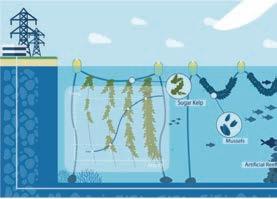

production, food provision, biodiversity enhancement, and more.
The European research project OLAMUR explores the coexistence of oshore wind farms with low-trophic aquaculture (LTA), e.g. bivalve aquaculture, through multiple pilot cases such as WIN@Sea. This project analyses how o shore wind farms can share space with LTA, such as mussel and seaweed farming and national monitoring of the marine environment, while also investigating whether the wind farm foundations (i.e. scour protection) serve as arti cial reefs.
MUPs can host a variety of industries, but one of the most common combinations pairs o shore wind energy production with LTA[8]: the production of non-fed species such as seaweed and mussels. Such MUPs feature wind turbines with lines of mussel and seaweed growing between the turbines (Figure 1). Beneath the turbines, rocks placed around turbine foundations – known
as scour protection – prevent seabed erosion and serve as arti cial reefs[2], over time likely developing marine life and boosting local biodiversity. MUPs can act as symbiotic systems, where renewable energy, sustainable aquaculture, and biodiversity enhancement support one another. O shore wind farms o en create marine refuges by restricting shing, allowing ecosystems to recover from commercial exploitation[4]. Beyond potentially supporting marine life, MUPs like those studied by the WIN@sea project have the potential to drive economic growth and create jobs[4]. Renewable energy and aquaculture are central to the EU Blue Growth strategy, which aims to improve resource e ciency, create jobs, and promote a sustainable ocean economy, all while improving biodiversity[6]
LTA may produce some of the most affordable and ecologically sustainable food products[5], requiring no arable land, freshwater, or fertilisers. Moreover, it supports natural ecosystems and mitigates eutrophication. Mussels, sometimes termed the “intestines” of coastal ecosystems, naturally lter suspended particles, algae, bacteria, and even microplastics, while seaweed acts as a natural bio lter, absorbing excess nutrients such as nitrates and phosphates and thereby improving water quality. Seaweed can also serve as a carbon sink, capturing and storing atmospheric CO2. Through photosynthesis, seaweeds assimilate carbon dioxide and release oxygen, increasing local oxygen concentrations and slightly raising pH, potentially helping to counteract local ocean acidi cation. Farmed seaweed can create underwater canopies resembling “forests,”
Artificial reefs come in many forms, from sunken ships to concrete blocks and boulders positioned on the seabed. From a biological perspective, an artificial reef can be any human-made construction or fi ed structure on the seabed, offering biological reef functions (e.g. better shelter or food availability[2]). In the case of MUPs, like the IN@sea project, the scour protection around the individual turbine monopiles, typically rocks placed to prevent erosion, may also have such artificial reef functions [7]
o ering temporary shelter and nursery grounds for some marine species. By cultivating species such as Mytilus sp. (blue mussels) and Saccharina latissima (sugar kelp) (Figure 2), the WIN@sea project demonstrates how aquaculture can deliver both environmental and nutritional bene ts. Beyond their environmental role, both mussels and seaweed show promise as sustainable ingredients in animal feed, o ering a lower-impact alternative to conventional protein sources. Through their ecological bene ts and contribution to food security, the combination of mussel and seaweed farms may serve as a scalable and resilient component of MUPs for sustainable ocean development, bene ting people, the economy, and the planet. On a commercial scale, these “ oating” farms may support the ght against climate change and ocean degradation.
Driven by the EU’s climate and energy pledges, Europe’s o shore wind capacity is set to expand in the coming decades[1]. O shore wind farms are often built on a sandy seabed, which is vulnerable to erosion from currents, threatening the stability of the monopiles and o ering limited shelter for animals[7]. When scour protections are placed where natural hard substrates once existed, they may function
as reefs, restoring lost ecological functions and supporting life across the food web[7]. These rocky surfaces provide substrate for sessile organisms
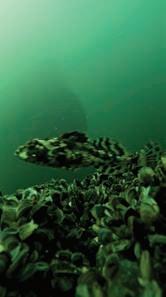
Scour protection around a wind turbine at the Win@Sea project. Small ussels and a fis can be seen e photo was taken with an underwater camera placed on the seabed to study marine life on the reefs around the turbine foundations. https://winatsea.com/
















that help lter water, absorb nutrients, and create shelter. Smaller species like sh and crabs settle there, potentially food for larger predators such as eider ducks, seals and porpoises. Over time, a food web may form, resembling the dynamics found on natural reefs.
Commercially important species like mackerel (Scomber scombrus) and Atlantic cod (Gadus morhua) are o en found lingering near o shore structures, likely drawn by the new feeding grounds[3]. This suggests that scour protection could play a role in supporting the recovery of various marine species. Projects like WIN@sea provide real-world insights by studying how existing o shore wind structures interact with the marine environment. In the Baltic Sea, the WIN@sea project aims to document the species communities that settle on the monopiles and the surrounding scour protection. The project will o er a better understanding of how wind farms can in uence local biodiversity.
At a time when the world races to balance sustainability with economic and technological growth, MUPs could become a game-changer in marine contexts. But they face several hurdles. First, regulatory barriers can stall development. Combining activities such as o shore wind energy and aquaculture is o en challenging, as each sector typically operates under its own regulatory and operational standards[8]. For example, Danish marine spatial planning assigns separate zones for wind energy and shell sh farming, which can make combined licensing costly and di cult. In contrast, seaweed cultivation remains unassigned to speci c zones, as the industry is still young and limited. Regulatory mismatches can make coordination di cult, delaying approvals and complicating potential MUP developments[8].
MUPs may also introduce environmental disruptions. Wind farms can lead to habitat loss, collision risks for marine mammals and birds, and disruption of migratory routes. The installation of scour protections may attract new species to the area and thereby change local biodiversity. However, by covering so sediments with rocks, scour protection may transform relatively homogenous seascapes, such as sandy seabed, into boulder reef-like habitats, a shi that favours certain species and could displace equally valuable communities adapted to sandy seabed. From a strict conservation perspective, this may not be desirable. Moreover, underwater noise pollution and electromagnetic elds emitted by power cables[7] may pose additional threats to marine species.
Aquaculture brings its own set of challenges. Storms, harvesting, or maintenance can cause mussel shells and dead individuals to fall to the bottom, potentially altering seabed composition. Mussels also produce
ukai eng, DTU, for the illustration in Figure1
IN@sea is one of three pilot projects within the larger EU-supported project O AMUR. The O AMUR project is funded by the European Union, grant no. 101094065. Views and opinions e pressed are, however, those of the authors only and do not necessarily re ect those of the European Union or the CINEA. Neither the European Union nor CINEA can be held responsible for them.
Additional support was received from the Aage V. Jensen Naturfond, Velu Foundation, the Danish Rod and Net Fish icense Funds, the Horizon Europe project MARHAB (grant no. 101135307), and the BlueBioClimate project (Interreg grant no. 2021TC16RFCB025).
bio-deposits that might reduce oxygen levels locally. However, in o shore areas like Krieger’s Flak, where the WIN@ sea project is located, strong currents help disperse these, minimising the risk. Seaweed farms may release organic matter or attenuate light, yet with suitable management, these e ects are limited. In Denmark, seaweed is not cultivated where natural seabed vegetation grows, and at the greater depths of o shore wind farms, light limitation is negligible, with little expected impact on the seabed. Another concern is the spread of invasive species. Structures like seaweed farms and wind turbines provide new surfaces for organisms to colonise, including non-native species that may compete with native species. These structures may act as “stepping stones,” enabling species to extend their range more easily than they would in a pristine seascape, thereby potentially outcompeting native marine life. If implemented with care and held to high standards, MUPs may become more than just an e cient use of space. They could o er a much-needed blueprint for working with nature, rather than against it, in shaping the ocean economy of the future. The potential is there. The challenge now lies in turning the vision into reality.
Yasmin Sassa Victor (s191311@ student.dtu.dk) and Ana Liu Wu (s233315@student.dtu.dk), both DTU Aqua, are the joint primary authors of the article.
Annette Bruhn (anbr@bios.au.dk), Aarhus University; project leader WIN@Sea
Christian Riisager-Simonsen (chrii@aqua.dtu.dk), DTU Aqua
Tim Wilms (tim.wilms@vattenfall. com), Vattenfall
Lars Emil Juel Andersen (leman@ aqua.dtu.dk), DTU Aqua
Jon C. Svendsen (jos@aqua.dtu.dk), DTU Aqua
[1] European Commission. (n.d.). O shore renewable energy. Retrieved from: https://energy.ec.europa.eu/topics/renewable-energy/offshore-renewable-energy_en
[2] Glarou, M., Zrust, M., & Svendsen, J. C. (2020, May 8). Using Arti cial-Reef Knowledge to Enhance the Ecological Function of O shore Wind Turbine Foundations: Implications for Fish Abundance and Diversity. Journal of Marine Science and Engineering, 8(332), 1–25. DOI: 10.3390/jmse8050332
[3] Ibanez-Erquiaga, B., Bakto , H., Mildenberger, T.K., Teilmann, J., Kleivane, L., Kornau, L.M., Agersted, M.D., Hüllert, S.M., & Svendsen, J.C. (2025, January 10). Increased sh abundance, biodiversity, and body size near a North Sea oil and gas platform. Marine Environmental Research, 204, 106959.
DOI: 10.1016/j.marenvres.2025.106959
[4] Przedrzymirska, J., Zaucha, J., Sze er, K., Michalak, M., Gawlikowska-Hueckel, K., & Calado, H. (2021). Multi-Use of the Sea as a Sustainable Development Instrument in Five EU Sea Basins. Sustainability, 13(15), 8159. DOI: 10.3390/su13158159
[5] Schi man, R. (2016, October 6). Can We Save the Oceans By Farming Them? Yale e360. Retrieved from: https://e360.yale.edu/features/new_breed_ of_ocean_farmer_aims_to_revive_global_ seas
[6] van den Burg, S. W. K., Schupp, M. F., Depellegrin, D., Barbanti, A., & Kerr, S. (2020, August 30). Development of multi-use platforms at sea: Barriers to realising Blue Growth. Ocean Engineering, 217(107983). DOI: 10.1016/j.oceaneng.2020.107983
[7] Wilms, T., Ibanez-Erquiaga, B., & Svendsen, J. C. (2023). Wind farms operating at sea: A sanctuary for marine shes? Habitat, 27, 48-59.
https://dzs.dk/wp-content/uploads/2023/09/ HABITAT27.pdf
[8] Xylia, M., Passos, M. V., Piseddu, T., & Barquet, K. (2023, May 19). Exploring multi-use platforms: A literature review of marine, multifunctional, modular, and mobile applications (M4s). Heliyon, 9, e16372. DOI: 10.1016/j.heliyon.2023.e16372
The Federation of European Aquaculture Producers, FEAP, promotes the responsible development of the aquaculture sector, uniting European associations that represent sh farming. The mission of the organisation is to coordinate its national member associations’ positions and provide accurate information to inform policy decisions.
Lara Barazi, the rst female president of FEAP, has served as the organisation’s vice president since 2018. In her new role, she headlines FEAP’s engagement with member associations and EU institutions. Here she discusses FEAP’s role in navigating new environmental pressures and regulation standards, focusing on the organisation’s position on collaboration and uni cation across marine sectors.
Ina rapidly evolving global landscape marked by environmental, economic, and geopolitical challenges, how is FEAP navigating these complex pressures?
The pressures facing aquaculture today are profound—from climate change and in ation to geopolitical instability and increasing regulatory demands. As FEAP, our job is to help producers navigate this uncertainty by being both a credible voice and a practical partner at the European level. First, on the environmental front, climate change is not a distant threat; it’s already impacting water temperatures, sh health, extreme weather events, and even algal blooms. FEAP works closely with EU institutions, researchers, and industry to push for climate adaptation strategies that are tailored to aquaculture, while also supporting innovation in areas like selective breeding, health management, and more sustainable feed. On
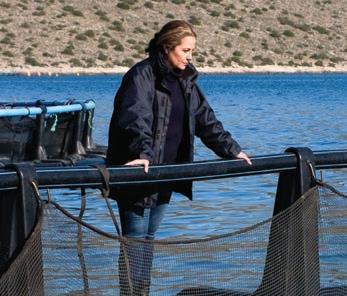
Lara Barazi Geroulanou, president of the Federation of European Aquaculture Producers
the economic side, producers experience growing pressure from in ation, rising input costs, and in some cases unfair competition from third-country imports. FEAP actively advocates for a level playing eld, calling for better enforcement of environmental and social standards in international trade, and for greater recognition of the high standards our producers already meet in Europe. Geopolitical tensions, including war and instability in neighbouring regions, have disrupted supply chains, energy prices, and logistics. These shocks have revealed how vulnerable food systems can be. That is why FEAP is pushing for European aquaculture to be recognised as a strategic sector, one that can strengthen food
security and reduce dependency on external sources of protein.
Among the many di culties facing the sector, what priorities are you focusing on to ensure that European aquaculture remains resilient, competitive, and sustainable?
At FEAP, we’re very clear on our priorities because the challenges are real, but so are the opportunities. To ensure that European aquaculture remains resilient, competitive, and sustainable, we’re focusing on three strategic pillars: regulatory reform, climate adaptation, and fair market conditions. First, we are pushing hard
for a more e cient and enabling regulatory framework. Licensing in many countries is slow, complex, and unpredictable, it’s a major bottleneck to innovation and growth. We work with the European Commission and national authorities to streamline procedures, reduce administrative burdens, and support digitalisation, while maintaining our high environmental and welfare standards. Second, we are prioritising climate change adaptation. European producers are already facing rising temperatures, extreme weather, and new disease pressures. FEAP advocates for investment in innovation, from selective breeding and improved health strategies to low-impact technologies and infrastructure upgrades, so that aquaculture can thrive under changing conditions. Third, we’re focused on securing fair and competitive market conditions. European aquaculture operates under some of the highest standards in the world, and this must be recognised and defended. That means stronger controls on imported products, clearer labelling and traceability, and ensuring that sustainability is not just a burden for EU producers but a level playing eld for all.
in the European Union has experienced little to no growth over the past 25 years. From your perspective, what are the core reasons behind this stagnation, and what structural or policy changes are most urgently needed to unlock the sector’s full potential and reverse this trend?
This is one of the most critical questions we face as a sector, and unfortunately, it’s not a new one. The rst and most fundamental barrier is the complexity and rigidity of the regulatory environment. Aquaculture in Europe is subject to overlapping national and EU regulations, lengthy and uncertain licensing procedures, and o en
contradictory policy goals. This creates risk and discourages investment. Second, there has been a lack of political ownership and strategic prioritisation. While aquaculture is recognised on paper as a key sector for food security and the Green Deal, that recognition has not consistently translated into concrete support or integrated policy. In some member states, aquaculture falls between ministries or lacks a clear development mandate. That needs to change, aquaculture must be treated as a strategic food-producing sector, not an a erthought. Third, negative narratives, o en outdated or not based on facts, have in uenced public opinion and, in turn, policy decisions. We need a more proactive, science-based communication strategy that explains the bene ts of European aquaculture: its low carbon footprint, its contribution to coastal communities, and its role in sustainable food systems.
Climatechange is rapidly altering the operating environment for sh farmers across Europe. What are the most urgent regulatory and infrastructural changes needed to enable aquaculture to remain resilient under these conditions?
On the regulatory side, the rst step is to ensure that climate adaptation is fully integrated into national aquaculture strategies, marine spatial planning, and EU-level frameworks like the Strategic Guidelines for EU Aquaculture and the Nature Restoration Law. We need regulations that are exible, science-based, and forward-looking, allowing producers to innovate, relocate, or modify operations in response to changing environmental conditions. For example, permitting procedures must allow for timely upgrades to infrastructure, adoption of new farming technologies, and movement of sites if climate conditions make existing areas unviable. Too o en, rigid regulations and
slow authorisations become a barrier to adaptation, precisely when agility is needed most. On the infrastructural side, investment is critical. We urgently need targeted funding, particularly through instruments like the EMFAF, to support: Modernisation of farms to cope with temperature extremes and water quality uctuations, selective breeding programs for climate-resilient species and strains, o shore and integrated production systems that can withstand more variable and energetic environments, and data collection and digital monitoring tools to better anticipate and manage climate risks.
Asthe rst female president of FEAP, how has your experience shaped your perspective on gender and diversity in the industry? And what are your priorities for making aquaculture more inclusive?
It’s an honour to serve as FEAP’s rst female president, and I see it not just as a personal milestone, but as a sign that the industry is evolving. Aquaculture has traditionally been male-dominated, particularly at senior leadership levels, but I believe that is starting to change, and it must change if we want the sector to be dynamic, innovative, and future-ready. I’ve seen rst-hand how women contribute across the value chain, from hatcheries and farms to labs, marketing, and management, o en with enormous dedication, resilience, and skill. At FEAP, we embed this thinking into all our work promoting visibility and leadership opportunities for women in aquaculture, not only through representation but also through mentorship, networks, and speaking platforms. We have organised a couple of one-week-long training sessions for young women aquaculture professionals in collaboration with the General Fisheries Commission for the Mediterranean and Black Sea (GFCM-FAO). We are also supporting
young professionals through engagement with universities, training programs, and industry-academia partnerships, ensuring they see aquaculture as a viable, forward-looking career path; championing inclusive hiring and skills development.
According to the recent Special Eurobarometer SP558 on EU consumer habits regarding shery and aquaculture products, public awareness and trust in farmed sh remain uneven across Member States. What speci c actions or communication campaigns is FEAP undertaking to improve public understanding?
The ndings of Special Eurobarometer 558 con rm what many of us in the sector have known for some time: public perception remains one of the biggest barriers to the growth of sustainable aquaculture in Europe. While many consumers are open to farmed sh, awareness is uneven, and persistent myths, about quality, welfare, or environmental impact, continue to shape attitudes and consumption choices. At FEAP, we believe that building consumer trust is not just a communications issue, it’s a strategic priority for the entire sector. FEAP is actively involved in shaping and supporting coordinated EU-wide messaging about aquaculture. We are working closely with the European Commission, particularly under the Common Market Organisation (CMO), to promote facts, not myths, and to highlight the nutritional, environmental, and economic bene ts of farmed sh. We are also strong advocates for clearer, more informative labelling of aquaculture products across the EU. Consumers have a right to know where their sh comes from, how it was produced, and under what standards. By improving traceability and emphasising EU-origin products, we can reinforce
the message that European aquaculture is not only sustainable, it is also trustworthy. Additionally, we believe that when consumers understand the reality of farmed sh, the quality, care, and science behind it, trust will follow. FEAP is committed to making that happen.
Asa pan-European organisation, how does FEAP ensure that the perspectives and needs of all its members are equally represented and re ected in its policy work and advocacy, and it does it work to foster cohesion across its members?
The diversity of European aquaculture is both a strength and a challenge. At FEAP, we represent producers from across the continent, from large-scale salmon operations in the North to small family-run carp ponds in Central Europe, and marine cage farms for bass and bream in the Mediterranean. Each country and production system comes with its own realities, priorities, and pressures, whether they relate to environmental conditions, regulatory frameworks, market access, or public perception. FEAP operates on the principle of consensus. Before taking public positions or engaging with EU institutions, FEAP consults its full membership to nd common ground. This collaborative approach ensures that no single region, species, or interest dominates the narrative. Regular General Assemblies, technical meetings, and digital consultations allow members to voice concerns and propose priorities. These forums foster mutual understanding between regions that might otherwise be disconnected, for instance, between coldwater and warmwater producers or between large-scale and small-scale operators. Additionally, from environmental regulation to market disruptions or animal welfare standards, FEAP actively tracks how emerging
issues a ect producers di erently across the continent. This allows it to respond with informed and inclusive policy positions that acknowledge both common challenges and regional variation.
Looking toward the future, what are your key strategic priorities for FEAP over the next ve years? And personally, what impact or legacy would you most like to leave from your tenure as president of the organisation?
Looking ahead, my key strategic priority for FEAP is to position aquaculture as a core pillar of Europe’s sustainable food system. That means ensuring that our sector is not only heard, but truly integrated into major EU strategies, from climate adaptation and food security to rural development and ocean restoration. Over the next ve years, FEAP will focus on securing structural reform that unlock growth particularly in licensing, championing climate adaption and innovation, defending fair market conditions, driving generational renewal, and promoting cohesion and unit across our diverse membership. On a personal level, the legacy I hope to leave is twofold. First, I would like to be remembered for making FEAP more open, inclusive, innovative and future-facing, a platform that brings in new voices, champions diversity, and re ects the full energy of the sector. Second, I would like to be remembered for helping to transform FEAP into a more professional, transparent, and e ective organisation, with strengthened governance, clearer structures, and more strategic engagement at the EU level. FEAP must continue evolving to meet the demands of a rapidly changing sector, and that means operating with the same level of professionalism and accountability we expect from ourselves as farmers.

7-9 October 2025
DanFish International * Aalborg, Denmark
Tel.: +45 9935 5555 info@akkc.dk https://danfish.com
7-9 October 2025
Conxemar * Vigo, Spain conxemar@conxemar.com https://www.conxemar.com/en/ exhibition/

13-17 October 2025
WEFTA Conference da sk Poland wefta2025@mir.gdynia.pl https://wefta2025.com/
29-31 October 2025
China Fisheries & Seafood Expo (SFSE) Qingdao, China info@seafarechina.com https://chinaseafoodexpo.com/
5-7 November 2025
Busan International Fisheries Expo Busan, Republic of Korea bisfe@bexco.co.kr https://bisfe.com/eng/
10-13 November 2025
World Aquaculture India Hyderabad, Telangana, India mario@marevent.com https://was.org/Meeting/code/WAI2025



19-20 November 2025
Catch Welfare Platform Conference * Forteiland Ijmuiden, Netherlands info@catchwelfareplatform.com https://catchwelfareplatform.com/ third-conference/









9-12 December 2025
AlgaEurope 2025 * Riga, Latvia info@dlg-benelux.com https://algaeurope.org/

18-19 February 2026
AquaFarm *
Pordenone Ital Tel.: +39 0434 232261 pdeodorico@fierapordenone.it www.fierapordenone.it

22-24 February 2026
fish international * Bremen, Germany +49 421 3505 260 info@fishinternational.de https://fishinternational.de/
3-5 March 2026
North Atlantic Seafood Forum Bergen, Norway Tel.: +47 4811 4196 ben-erik@nor-seafood.no https://nor-seafood.com/
15-17 March 2026
Seafood Expo North America/ Seafood Processing North America
Boston, USA
Tel.: +1 207 8425504 customerservice@divcom.com www.seafoodexpo.com


21-23 April 2026
Seafood Expo Global/Seafood Processing Global * Barcelona, Spain
Tel.: +1 207 8425504 customerservice@divcom.com www.seafoodexpo.com
24-26 September 2026
Future Fish Eurasia zmir T rki e +90 212 347 10 54 info@eurasiafairs.com
* Eurofish will be attending
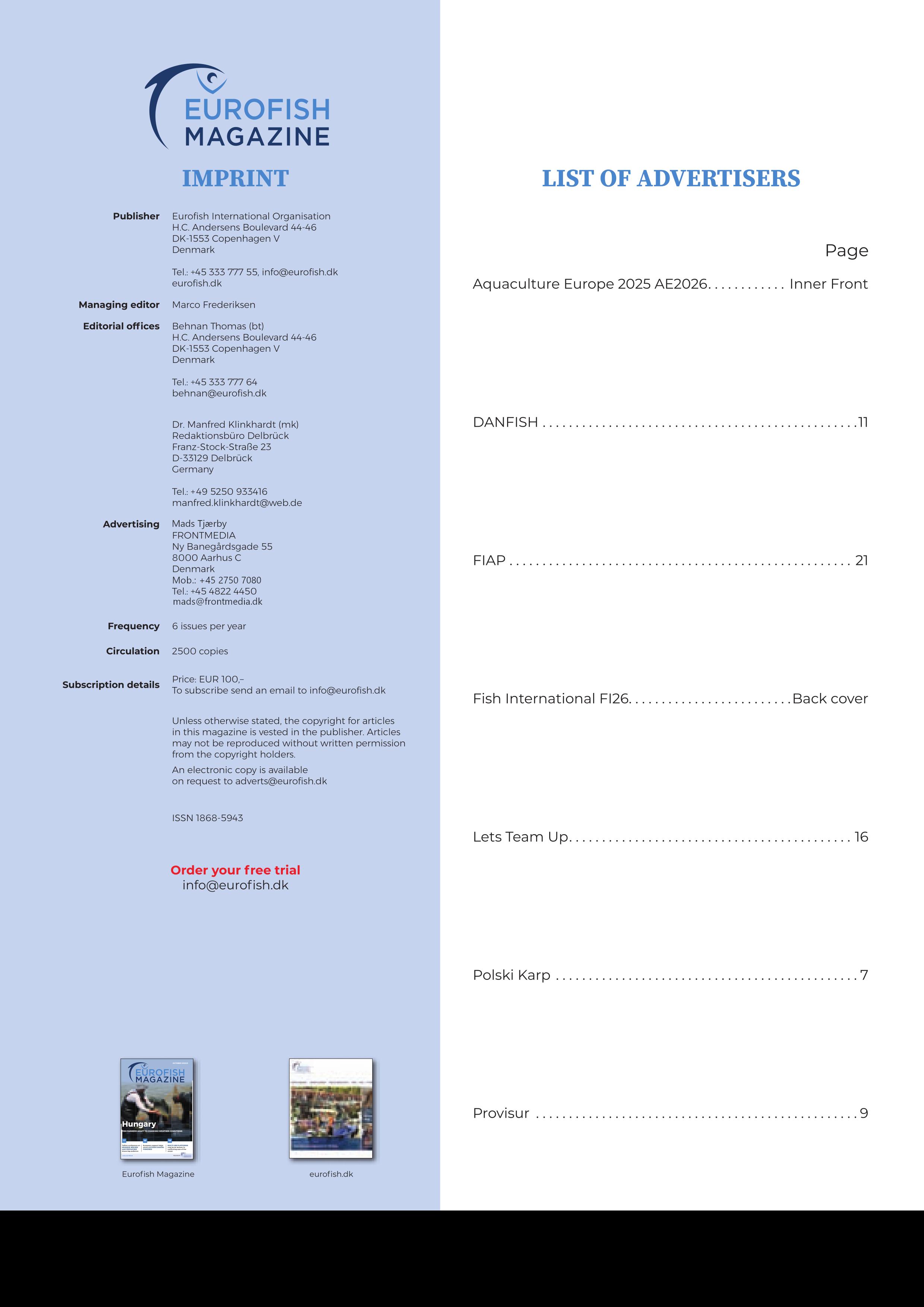

in fishbox compactors and recycling Tel. +45 97371799 runi@runi.dk www.runi.dk
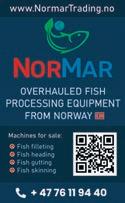
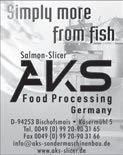
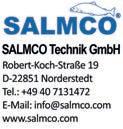

VredenburgSouthAfrica Mobile: +27 83 2620362
E-mail: easycancc@gmail.com Website: www.easycan.co.za
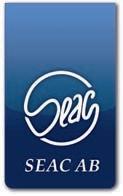
.4, SE-386 90 Öland Sweden info@seac.se WWW. SEAC.SE
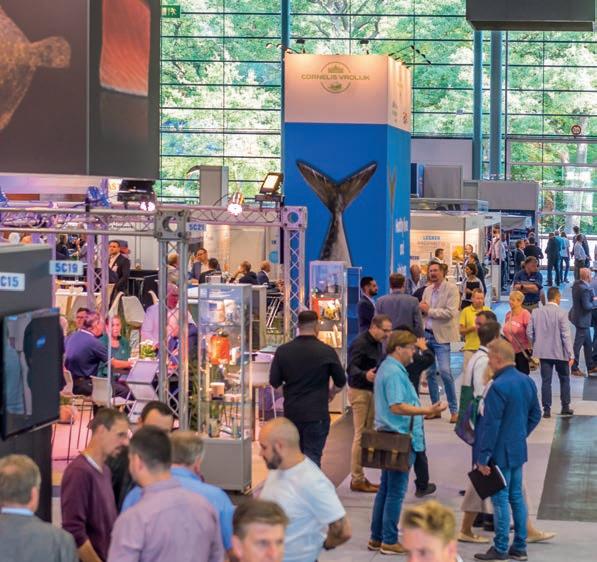
BECOME PART OF GERMANY‘S ONLY SEAFOOD TRADE FAIR, the meeting place for seafood businesses, associations and companies from the logistics, packaging, IT and technology sectors.
Together with the gastronomy trade fair GASTRO IVENT, it attracts over 13,000 trade visitors - including sh industry professionals, sh wholesalers, food retailers, institutional caterers and the gastronomy sector - to the Hanseatic city of Bremen.